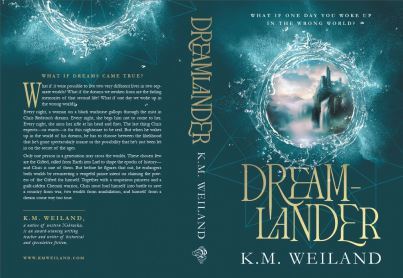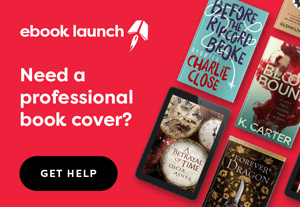K.M. Weiland's Blog, page 13
July 3, 2023
A New Way to Think About the Lie the Character Believes
 One of the simplest entry points to understanding how story works is the Lie the Character Believes. It is the fulcrum of any character arc or thematic discussion within a story. It’s also the gasoline in the engine of a character’s inner conflict—and, by extension, it can either power the outer conflict or at least be used a lens through which to view it.
One of the simplest entry points to understanding how story works is the Lie the Character Believes. It is the fulcrum of any character arc or thematic discussion within a story. It’s also the gasoline in the engine of a character’s inner conflict—and, by extension, it can either power the outer conflict or at least be used a lens through which to view it.
As its name suggests, the Lie the Character Believes is a simplistic concept, which is exactly what makes it so valuable and utilitarian a tool for understanding story. However, as with all simplistic concepts, we must be careful not to assume it lacks complexity.
Although you can certainly frame your character’s conflict in terms of a black and white Lie/Truth dichotomy, the reality is of course more complex. And that’s exactly what we’re going to talk about today: reality—and how the Lie the Character Believes is, in fact, a gauge of the character’s relationship with reality.
What Is the Lie the Character Believes?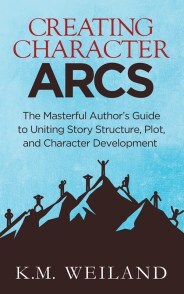
Creating Character Arcs (Amazon affiliate link)
Those of you who have read my book Creating Character Arcs (and the Creating Character Arcs Workbook) will be familiar with the Lie the Character Believes as arguably the central principle of character transformation. For those who are new to the idea, the Lie the Character Believes is the mindset the character will be challenged to arc out of over the course of the story.
If the character succeeds in transcending the Lie, the story will follow a Positive Change Arc. If the protagonist already adheres to the story’s thematic Truth and inspires supporting characters to transcend the Lie, the story will offer a Flat Arc. And if the character fails to transcend the Lie, the story will present a Negative Change Arc (of which there are at least three variations).
The Lie is a limited perspective the character holds about himself or about the world. Up until the beginning of the story, it is a perspective that has offered relative value to the character and his ability to survive and succeed within the story’s “Normal World.” However, once the character enters the crucible of what will be the story’s Adventure World, everything changes. The Lie proves itself to no longer be a functional modus operandi. From here on the, character will be challenged to adapt to the story’s thematic Truth. Only if he succeeds in (usually painfully) the expanding his perspective will he be able to grapple with the main conflict and perhaps gain the plot goal he is pursuing.
>>Click here to read “2 Different Types of the Lie Your Character Believes“

Creating Character Arcs Workbook
As we explored a few weeks ago, the Lie is distinct from but still closely tied in with other aspects of the character’s primary “pain point.” The Lie will usually arise from a painful experience in the character’s past—called the Ghost—which informs her way of perceiving how the world works. Very often, the Ghost will have caused a wound the character carries with her and which makes her cling even more desperately to the Lie in the belief it is somehow protecting her. This belief may be entirely accurate, or it may simply be a trauma response.
Over the course of the character’s arc, the Lie will be systematically challenged by the events of the plot. The character will slowly begin to see another possibility—the enlarged perspective of the thematic Truth. Particularly at the story’s Midpoint, he will face a Moment of Truth, in which he is able to see the validity of the new perspective even though he is not yet willing to relinquish the familiar Lie-based mindset. By the time the character reaches the Low Moment of the Third Plot Point and is faced with the impending Climax, he will have to choose whether he is willing to sacrifice the comfortable mindsets upon which he has so far depended, in order to allow himself space to the grow into the possibilities of the bigger Truth.
Remember: The Lie and the Truth in a Story Are RelativeThe Lie the Character Believes might be an outright deception.

For example, in The Village, the young characters are taught by the elders that monsters will kill anyone who ventures into the woods. (The Village (2004), produced by Touchstone Pictures.)
Or it might be an obviously mistaken perspective.
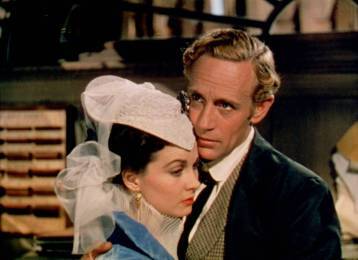
For example, in Gone With the Wind Scarlett O’Hara is determined to believe Ashley Wilkes loves her more than his wife Melanie. (Gone With the Wind (1939), produced by MGM.)
However, the most accurate way to think of the Lie is simply as a limited perspective.
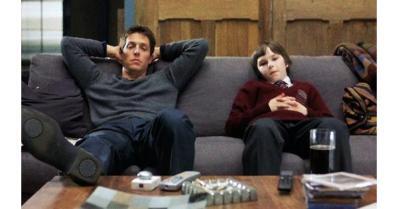
For example, “growing up is hard” in About a Boy. (About a Boy (2002), Universal Pictures.)
One of the best ways to recognize this is to also examine the idea of the thematic “Truth.” Even though I capitalize the term in my teachings to indicate its importance as an entity within story, this is not meant to indicate your story’s thematic Truth must represent ultimate Truth. In 99% of stories, the thematic Truth will be a relative truth. It is truer than the Lie-based mindset with which the character has wrestled throughout the story.
In short, the Truth the character is challenged to adopt is itself a limited perspective. It’s just less limited.

Writing Archetypal Character Arcs (affiliate link)
This points to the fact that character arcs reflect real life by showing characters growing but rarely arriving. Think about it: we all probably undertake a new character arc—the challenge to make the leap from a limited perspective to a slightly more accurate perspective—every single day. Sometimes those arcs are so life-changing we recognize them as such (such as the “life cycle” arcs I talk about in my book Writing Archetypal Character Arcs). But even these massive mindset shifts are just another rung up (or down) the ladder of consciousness in this human life.
The best any of us can do is hope to refine our perspectives into greater accuracy a little more every day. And that’s what we expect from our characters as well.
>>Click here to read “How to Use a ‘Truth Chart&’ to Figure Out Your Character’s Arc“
What the Lie the Character Believes Really Is: A Resistance to RealitySo if the Lie isn’t, strictly speaking, a lie and the Truth isn’t the truth, then what are they?
As I was lying in bed the other morning, one of my early thoughts (because apparently I dream about story theory…) was, The Lie the Character Believes is really just a resistance to reality.
The Lie is not a Lie until the character’s relationship to reality shifts, either internally or externally.
This is why the character will have been able to merrily carry on with her limited perspective for perhaps even her entire life up until the beginning of the story. This also helps us define exactly what story is, since it underlines the old directive that “whatever is happening in a story should be the most important thing to have happened in the character’s life so far.” We often take this to mean external action in the plot, but, really, what is more important than perspective?
Story, by definition, challenges the status quo. The Normal World of the First Act is designed to represent this status quo. It is a status quo in which the Lie-based perspective proves reasonably effective, which means the character has no reason to challenge it. Indeed, trying to challenge it too soon might even prove counter-productive.
But now times are a-changing. The world around the character, or perhaps the character himself, is no longer the same. Indeed, reality is changing. To the degree the character resists that change and refuses to adapt his mindset, his old mindset’s effectiveness will prove more and more limited, until it becomes definitively incorrect—a Lie.
Even if this mindset was previously competent, it is now outmoded. The rules have changed, and the character must now prove whether or not she can adapt. However, the adaptation of perspectives is not easy. This shift from Lie to Truth is never as simple as learning to apply new facts or skills. Rather, this is about digging deep into the psyche and uprooting a perspective with which the character identifies. The Lie, therefore, can also be viewed as an ego identity.
Ego identities don’t go easily. They can’t go easily. Their entire function within the psyche is to ensure survival. If something worked in the past, the ego wants us to keep on doing it. Depending on how deeply the ego has identified with any particular perspective, it will fight tooth and claw to keep from giving it up. The ego may not necessarily oppose the recognition of a new perspective, but it does not want to give up the old viewpoint.
This is why character arc reveals the progression of the character’s relationship to both the Lie and the Truth:
In the First Act, the character entirely believes the Lie.In the first half of the Second Act, the character begins to experience the limitations of the Lie.At the Midpoint’s Moment of Truth, the character witnesses the irrefutable potency of the Truth. In a Positive Change Arc, the character will adopt the mindset of the Truth, but will not yet give up the Lie.In the second half of the Second Act, the character will attempt to implement the Truth without fully refuting the Lie and will increasingly experience both the potential of the Truth and the “punishment” of the Lie.At the Third Plot Point, the character will encounter a situation that demands a final choice between the Lie and the Truth. The two perspectives can no longer be held simultaneously.In the Third Act, the character will act upon whichever perspective was chosen. In a Positive Change (and Flat) Arc, the character will use the Truth to gain success of some type (whether internal, external, or both). In a Negative Change Arc, the character will refuse to face the demands of reality and continue clinging to the original (or an even worse) Lie.9 Questions to Ask About the Lie Your Character BelievesAs we close out this examination of the Lie Your Character Believes, here are nine questions you can use to examine how your characters might be resisting the new reality of your story. Inherent in the answers will be your story’s strongest character arc.
1. How have the early events of the story changed things for the protagonist in a way that demands adaptation?
2. How has the character’s reality changed since the beginning of the story?
3. How is the character now out of sync with this new reality?
4. Which of the character’s mindsets is no longer accurate?
5. How do the character’s attempts to maintain this old mindset now create a resistance to or even denial of the new reality?
6. Is the character attempting to apply old rules to a new game?
7. How might the necessary adaptation be painful or difficult for the character to accept?
8. What ego identities must the character release in order to successfully adopt the new perspective?
9. How will the character attempt to harmonize the old mindset with the new one?
Wordplayers, tell me your opinions! What is the Lie Your Character Believes? Tell me in the comments!Click the “Play” button to Listen to Audio Version (or subscribe to the Helping Writers Become Authors podcast in Apple Podcast or Amazon Music).
___
Love Helping Writers Become Authors? You can now become a patron. (Huge thanks to those of you who are already part of my Patreon family!)The post A New Way to Think About the Lie the Character Believes appeared first on Helping Writers Become Authors.
June 26, 2023
What Does Your Character Want? Desire vs. Plot Goal vs. Moral Intention vs. Need
 We often hear “conflict is story.” What does that mean? If we walk it back, we see that conflict is driven by opposition. That opposition stands between the characters and something they want. Therefore, we could just as easily say “desire is story.” But that isn’t always simple to figure out either, particularly since story terminology includes many seemingly applicable terms, including the character’s want, desire, plot goal, and even moral intention.
We often hear “conflict is story.” What does that mean? If we walk it back, we see that conflict is driven by opposition. That opposition stands between the characters and something they want. Therefore, we could just as easily say “desire is story.” But that isn’t always simple to figure out either, particularly since story terminology includes many seemingly applicable terms, including the character’s want, desire, plot goal, and even moral intention.
On this site and in my books on writing, I often talk about the Thing the Character Wants and the Thing the Character Needs as driving factors in character arc, and thus plot structure. But desire and plot goal are also important frequently used terms. What’s the difference?
Last week’s post touched on the important nuances in terms used to describe your characters’ pain points (“Your Character’s Ghost vs. Wound vs. Lie vs. Weakness“). This week, I want to stay in that lane and explore some terms used to describe what the character wants.
Once again let me note there is often much variation and subtlety in how these terms are employed. For instance, some people may use the word “desire” to encompass all of the terms we’ll be talking about today. This points to the importance of not relying too much on specific terms and instead learning to understand the underlying principles, so you can quickly translate them into your own preferred verbiage. Today, I am sharing how I use these terms.
The Four Driving Forces of Plot and PersonalityFirst, let’s just touch briefly on the generalities of what “want” is within a story. All variations of a character’s desire will function as driving forces of both that character’s personality and the plot. Some desires may be low-key and used only to dramatize certain aspects of the character’s nature and/or to drive goals and conflict on the scene level. But the Want/goal/desire/etc., creates the backbone of your story. This desire will be throughline of momentum for your plot, the fulcrum upon which the character’s arc turns, and an important factor within the revelation of your story’s theme.
This element of the story should never be chosen randomly. Even when you allow it to emerge organically from your own telling of the story, you must make certain it works with every other part of your plot, character arc, and theme to create a cohesively propulsive experience for readers.
What Is the Thing Your Character Wants?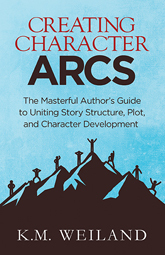
Creating Character Arcs (Amazon affiliate link)
The Thing Your Character Wants, or the Want, is the term I use throughout my teachings to reference the specific fulcrum upon which character arc turns. The Want is contrasted against a Need (see the last section in this post) to form the basis of the character’s inner conflict.
The Want is a desire arising from the limited perspective (based upon the Lie the Character Believes) with which the character begins the story. The Want informs the story’s specific desire and plot goal, but is not necessarily either. Rather, it is the deeper, more foundational longing that inspires the specificities of the story’s plot. The Want will be directly motivated by the character’s backstory Ghost.
By itself, the Want may or may not be as limited as is the Lie, but because it is motivated by the Lie, the character’s initial understanding of the Want or the means for obtaining it will at least start out from within these same limitations.
Therefore, the Want, although powerful, is not strictly an aligned desire for the character. Either it is the wrong thing to want or it is wanted for the wrong reasons. This misalignment will create fierce inner conflict between the character’s desire for this thing and his ultimate and even deeper need to come into wholeness. Whether he experiences a Positive Change Arc or a Negative Change Arc will decide whether or not he is able to harmonize this inner conflict and either give up the misaligned Want or bring it into alignment so that he may achieve it in a healthy way.
For Example: In A Christmas Carol, Scrooge’s Want is to amass great wealth. This Want arises from his personal backstory Ghost—an unloved and insecure childhood—and is motivated by his belief in the Lie—that personal worth and security can only be gained via material means. His Want is not his plot goal (as we shall see below), but it is the driving motivation of his life. His desire to cling to this mindset is what creates the plot conflict as he resists the attempts of the Christmas Spirits to show him a better way.
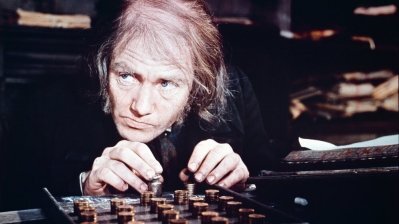
Alberty Finney in Scrooge (1970), directed by Ronald Neame, produced by Cinema Center Films.
What Does Your Character Desire?“Desire” is a term frequently used to broadly indicate what your character wants (note the small case “w” to differentiate from the thematic Want describe above). The desire refers to what your character wants within the context of the story.
The desire will be for something concrete, or at least something specific. Although the desire may be something etheric such as a state of mind (e.g., to feel good about one’s self), it should be refined to its most concrete point. For example, the character may desire something physical such as a new car, or she may desire a promotion, or she may simply want the boss to shake her hand. In the end, she may realize she simply wants to feel proud of herself.
The desire and the plot goal are, in many ways, one and the same. However, the nuance is that the desire creates the goal, while goal is a practical attempt to obtain the desire.
For Example: Within the confines of the story, Scrooge’s primary desire is to “wake up” from his nightmare of the Christmas Spirits and return to his routine life as a hard-hearted moneylender who doesn’t have to worry himself about the affairs of others. Note that this desire doesn’t come into play in the story until after the Inciting Event. In contrast, the Want pre-dates the story’s specific plot conflict and is therefore available to influence Scrooge’s choices and actions in the early chapters before the main conflict becomes explicit.
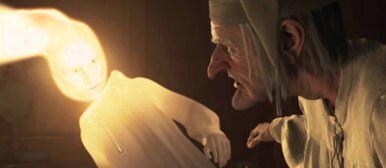
Jim Carrey in A Christmas Carol (2009), directed by Robert Zemeckis, produced by Walt Disney Pictures.
What Is Your Character’s Plot Goal?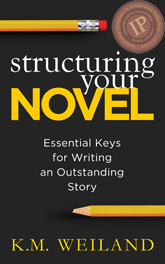
Structuring Your Novel (Amazon affiliate link)
The plot goal is the practical manifestation of the desire.
If the character desires to get married, then the plot goal would be to win over the woman he loves.If she desires to overcome grief from a loved one’s death, then the plot goal might be Cheryl Strayed’s plan to walk the Pacific Crest Trail in Wild.If he desires to write a newspaper piece about a murder, then the plot goal would be discovering the murderer.If the character desires a luxurious Italian vacation, then the plot goal boils down to getting to Rome.Often, the line between desire and goal is paper thin, and it’s not always beneficial to differentiate between the two in every story. What’s most important to grasp is that the plot goal will drive the plot. It is the practical manifestation of the desire and a means of helping the character achieve the deeper Want.
Every scene in the story will measure up against the plot goal in one way or another. Indeed, the plot goal will be broken down into many smaller goals which can be executed on the scene level, as the character works toward the ultimate goal. This goal may or may not be achieved in the story’s Climax. Whether the character succeeds in pursuit of the goal will depend on many things, including the type of story (e.g., comedy or tragedy) as well as whether or not the goal can ultimately be aligned with the character’s final thematic relationship to the story’s Truth.
For Example: Scrooge is a pretty reactive protagonist who doesn’t have much choice but to follow along with his ghostly abductors. However, we can extrapolate that his plot goal is to escape the Spirits and end his ordeal. At first, he tries to accomplish this by denying the Spirits’ existence, then by struggling against them, then by grudgingly going along with them, then finally by cooperating with them. How he goes about trying to accomplish this goal evolves over the course of the story as his own perspectives relative to the Lie and the thematic Truth also evolve. In short, the plot goal arcs with him.
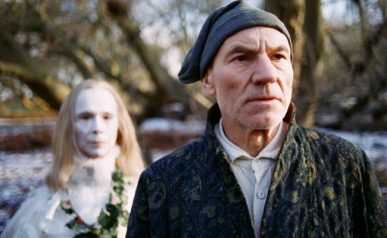
Patrick Stewart and Joel Grey in A Christmas Carol (1999), directed by David Jones, produced by TNT Productions.
What Is Your Character’s Moral Intention?
Writing Your Story’s Theme (Amazon affiliate link)
One final consideration is that of your character’s moral intention. Want, desire, and goal will all be influenced by what your character views as her moral reasons for pursuing the goal. This moral alignment will be entirely relative. Usually, the character will believe in the correctness of her own morality, regardless how society or objective reality may view it. Alternatively, it’s also possible, for example, that she may choose to act in a relatively noble or heroic way and yet view her own intentions as morally repulsive.
Regardless, what’s important is identifying how your character morally categorizes her relationship to her desires. What is her intention is trying to fulfill this desire for herself? She may believe she is doing it for the good of all, or she may believe she will be damned for pursuing it. Either perspective will lend nuance to why the character is seeking this goal and how she goes about approaching it. It will certainly color her inner conflict and perhaps become the central issue of her character arc.
In short, if the desire is the what and the plot goal is the how, then the moral intention is the why. (The Want is also a why, and can also be considered in light of when, due to its correlation to the backstory Ghost.)
For Example: Scrooge states his moral intention plainly in the beginning of the story when he repeatedly refuses to help those who cannot help themselves. His speech to the charity collectors about the poor belonging in jails and workhouses makes his perspective perfectly clear. This view of morality influences all of his early choices in the story and is the primary catalyst for the Spirits’ intervention. Only once Scrooge’s arc leads him to a more compassionate view of his own relationship with humankind is he set free to begin anew.
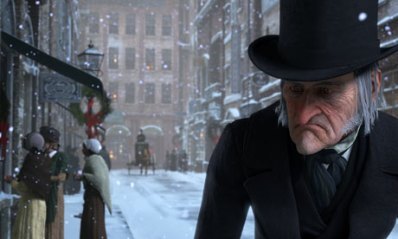
Jim Carrey in A Christmas Carol (2009), directed by Robert Zemeckis, produced by Walt Disney Pictures.
Bonus: What About Your Character’s “Need”?As mentioned in the first section, about the Thing the Character Wants, the Need stands in opposition to the Want. If the Want is Lie-based—a desire arising from the character’s currently limited perspective of himself and the world—then the Need is Truth-based. Indeed, the simplest way to think of the Need is as the Truth. The character Needs the Truth.
The Truth is the antidote to the Lie. It is the next step up in the character’s understanding of life. It is not ultimate Truth, but rather a comparative Truth—a slightly more expansive viewpoint than that offered by the Lie. It is the viewpoint that is necessary to bring wholeness to the character’s inner self, to heal the pertinent wounds of the past, and to fulfill the true longings of the Want.
The Truth may or may not be able to grant the character the specific plot goal he has been pursuing throughout the story, but it is still likely to bring peace and contentment. If the character is following a Negative Change Arc and is unable to accept the Truth by the end of the story then even if he gains the plot goal or the Want, he is unlikely to find true satisfaction in them.
The Need may also be expressed more practically than simply a shift in mindset. It may be represented by something equally as explicit as the Want. For a really basic example consider, how you might Want a candy bar, but know you Need a salad.
For Example: As is the case with most characters, Scrooge’s Need is for the Truth. The Thing He Needs is to reframe his perspective about human worth and realize the true measure of wealth is not material goods one hoards but rather the ability to bless others with love—and be blessed in return.
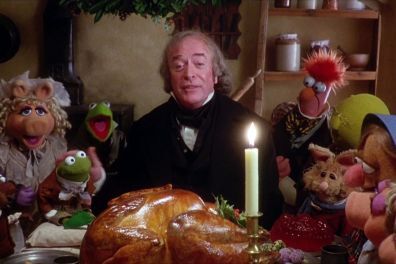
Michael Caine in The Muppet Christmas Carol (1992), directed by Brian Henson, produced by Walt Disney Pictures.
***
Writers can find value and nuance by digging deeper into the functionality of all of these terms for characters’ desires. However, if you were to add just two to your writing toolbag, I recommend the Thing Your Character Wants and the Thing Your Character Needs. Even by themselves, these two create the all-important fulcrum of inner change, drive the plot, and add thematic depth. All of the other terms arise from them.
Wordplayers, tell me your opinions! What does your character want in your latest story? Tell me in the comments!Click the “Play” button to Listen to Audio Version (or subscribe to the Helping Writers Become Authors podcast in Apple Podcast or Amazon Music).
___
Love Helping Writers Become Authors? You can now become a patron. (Huge thanks to those of you who are already part of my Patreon family!)The post What Does Your Character Want? Desire vs. Plot Goal vs. Moral Intention vs. Need appeared first on Helping Writers Become Authors.
June 19, 2023
What’s the Difference? Your Character’s Ghost vs. Wound vs. Lie vs. Weakness
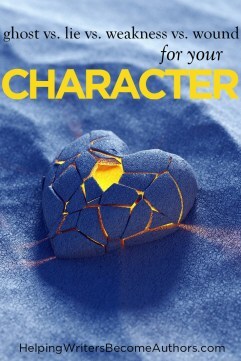 One of the major keys to engineering characters who can create reader-favorite moments is understanding your characters’ weaknesses. But those weaknesses seem to be known, in writer terminology, by a dizzying array of names, including “ghost,” “wound,” and “lie.” What’s the difference? And which goes where in the story, and how do they each operate differently—or do they?
One of the major keys to engineering characters who can create reader-favorite moments is understanding your characters’ weaknesses. But those weaknesses seem to be known, in writer terminology, by a dizzying array of names, including “ghost,” “wound,” and “lie.” What’s the difference? And which goes where in the story, and how do they each operate differently—or do they?
Here on my site, you may notice that I favor the terms Ghost and Lie. In my articles and books, you’ll almost always see these words capitalized as my way of indicating they are important catalytic entities within storyform as I teach it. However, you may encounter other writers who prefer to use the terms “weakness” or “wound.” Are these all referring to the same concepts?
In many general ways, all four terms do refer to the same thing, and that is the fundamental pain point at the core of the character’s psyche. Whether large or small, traumatic or mundane, this pain is perpetuating a limited way of being in and seeing the world. It constricts the character’s ability to move forward toward the plot goal in a holistic and efficacious manner.
That said, each term does have a slightly different connotation. Today, in response to several requests on the topic, I’m going to examine all four terms, as well as how I personally use them in my own understanding of story.
Remember: Writing Terminology VariesBefore we get started, let me just say that perhaps the main point here is that writing terminology varies. Although certain prevalent terms are widely accepted, there are also many, many different terms that you will see applied to the same, or almost the same, concept.

Structuring Your Novel (Amazon affiliate link)
For example, I teach story structure as having three major plot points: the First Plot Point at the 25% mark, the Midpoint or Second Plot Point at the 50% mark, and the Third Plot Point at the 75% mark. However, many writers don’t count the Midpoint as a major plot point and refer to only two plot points, in which case they might refer to the turning point at the 75% mark as the Second Plot Point.
Obviously, this and many other examples, can create confusion. However, although the terminology can vary, the underlying principles generally don’t. In the above instance, if you understand that someone is discussing the turning point into the Third Act, happening around the 75% mark, and dealing with the “Low Moment” or “Dark Night of the Soul” beat—then you can identify what they’re talking about regardless of whether they choose to call it the Second or Third Plot Point.
So basically: stay on your toes and make sure you understand the underlying principles of storytelling rather than just relying on terminology. The bonus here is that doing so ensures you grow and remain grounded in your innate understanding of story, rather than trying to copy/paste someone else’s format onto your experience.
The Four “Pain Points” in Your Character’s Past and/or Personality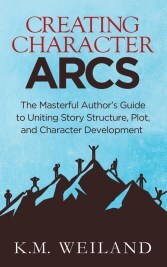
Creating Character Arcs (Amazon affiliate link)
All four of the terms we’re exploring today—Ghost, wound, Lie, and weakness—refer to a pain point for your character. Each represents an inner obstacle contributing to the character’s inner conflict. This inner conflict will certainly contribute to the story’s external conflict, as the character attempts to pursue and gain the plot goal. However, the inner conflict’s most crucial purpose is its ability to power your character’s arc. Whether or not your character changes positively by the end of the story, these pain points are what drive the question of transformation.
Therefore, all four terms are similar in their reference to this painful driving catalyst. Usually, this pain point will arise from the character’s past and is therefore often considered backstory. It will also almost certainly manifest in the character’s personality in some way—as an embedded flaw that is causing some sort of suffering or at least inconvenience in the present.
However, despite their common ground, these four terms are, in fact, discrete. Each refers to a slightly different aspect of this difficulty. As mentioned at the top of the article, I personally choose to work primarily with the terms Ghost and Lie. This is because the wound and the weakness are implicit within the Ghost and the Lie, and I feel it becomes confusing to discuss all four as if they are totally separate.
Still, it is worthwhile to understand the finer points of each concept.
What Is Your Character’s Ghost?
The Anatomy of Story by John Truby (affiliate link)
>>Click here to read more about the Ghost
The “Ghost” is a term originated by John Truby in his groundbreaking book The Anatomy of Story. In his recent book The Anatomy of Genres, he explains:
It is the event from the past still haunting the hero in the present.
He goes on to delineate that the Ghost “represents the power of the past over the present” and “…is the mind attacking itself.”
I’ve always liked the evocation of the term Ghost, since it inherently indicates that something is “haunting” the character. Even if the character wants to leave the past in the past, this is something too engrained within his personality and psyche. Unless he is willing to undertake the transformation of a full character arc, he will not be able to overcome it.
When teaching story structure, I use the term Ghost to encapsulate the motivating factor in the character’s backstory. You can think of it as the “inciting event” before the Inciting Event (i.e., before the main story, although some stories may choose to dramatize the Ghost event in a prologue or flashback).
For Example: In A Christmas Carol, Scrooge gets to personally revisit his backstory Ghosts (with the Christmas ghost—which is pretty much perfect when you think about it). His foundational Ghost is that of his cold and punitive relationship with his father, who all but abandons him at boarding school—a catalyst that shapes Scrooge’s personality so profoundly even his love for Belle can’t change the path upon which he has set himself.
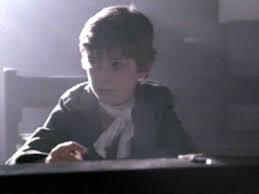
Ebenezer Scrooge’s backstory Ghost (not to be confused with the Ghost of Christmas Past) is revealed to be his love-starved childhood, abandoned to a cruel boarding school.
What Is Your Character’s Wound?
The Emotional Wound Thesaurus by Angela Ackerman and Becca Puglisi (affiliate link)
>>Click here to read more about the wound.
“Wound” commonly refers to the deep pain point at the heart of the character’s need for transformation. (Angela Ackerman and Becca Puglisi gave us the popular reference The Emotional Wound Thesaurus for brainstorming these wounds for our characters.)
The wound is often a more generalized concept. It certainly incorporates the Ghost—the wounding event in the character’s past. But it may also refer more specifically to the pain point itself—to the suffering the character experiences in the present. As such, it can often refer just as much, if not more, to the character’s psychological pain, rather than the event that caused it.
For Example: Scrooge’s wound is his unlovedness—his father’s refusal to love him and his own subsequent refusal to love Belle. This warps him into a “squeezing, wrenching, grasping, scraping, clutching, covetous, old sinner.”

Scrooge’s psychological wound of “unlovedness” sees him turning more and more to money, rather than people, to fill the hole in his heart.
What Is Your Character’s Lie?>>Click here to read more about the Lie Your Character Believes
The Lie Your Character Believes is one of the most important factors in crafting a solid character arc. This Lie, in contrast to the story’s posited thematic Truth, is what will create the character’s inner conflict. The Lie primarily represents a flaw in the character’s perspective or view of life. This limited perspective usually arises from the formative events caused by the backstory Ghost. This event and the psychological wound it creates leads the character to believe her best chance at coping and/or never repeating that pain is to adopt a particular way of being in the world.
Like all points of view, it is adopted because the person believes (rightly to at least some extent) that this perspective is the one best suited to protect and provide for her. It may shield her from painful feelings such as shame, guilt, or grief. Or it may offer guiding principles that help her gain what she wants and needs.
The important thing for writers to understand about the Lie is that up until this moment in the character’s life (i.e., the opening of the story), the Lie has probably been good for the character, at least comparatively. After all, there must be a reason the character has clung to this limited belief for so long.
However, as your story proper begins, the circumstances of the character’s life are about to be forever changed. And as the circumstances evolve, so must the character’s outlook. From this point on, the Lie becomes less and less effective in protecting the character from the effects of the past and in helping her move forward toward her desired goal. If she fails to face the fires of inner transformation and upgrade to the story’s offered Truth, she will not find healing from past wounds, but only more wounding.
Therefore, the Lie originates from the Ghost. In many ways, it represents the wound and indeed may even be the wound, as would be the case with a self-abusive belief such as “I’m worthless” or “I’m not pretty enough” or “it was my fault my grandmother died.” Most specifically, however, the Lie is the limited perspective with which the character begins the story.
For Example: The basic Lie Scrooge believes at the beginning of his adventure is that a man’s worth can only be measured by material means—by the amount of money he controls. We can extrapolate that this perspective arises from the even deeper and more personal Lie that Scrooge himself was not worthy of his father’s love. Throughout his life, he uses this cold-hearted philosophy to “protect” himself from experiencing the love of others, including his sweetheart Belle and his nephew Fred, so (we assume) he will not have to face the deep wound of his own pain and grief.
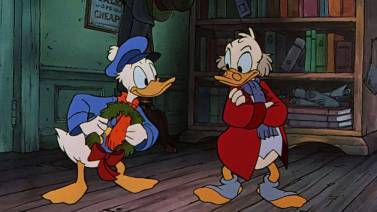
Scrooge begins his story with the Lie he has believed all his life–that a man is measured by his money, and that money is worth more than love.
What is Your Character’s Weakness?>>Click here to read more about the weakness
Writers are commonly encouraged to balance characters’ strengths with correlating weaknesses. This is solid advice. Just a few weeks ago, I talked about how you can use “shadow theory” to easily identify which strengths and weaknesses offer the most organic polarities for each character. Not only do weaknesses create innate opportunities for conflict and therefore give your character something to overcome, they also function to make characters more relatable to your audience.
Your character’s weakness can be just about anything. It might be a literal physical weakness, such as an injury. It might be a psychological weakness or phobia. Or it might be a personality flaw, in which the character has a tendency, whether impulsively or deliberately, to hurt others. Often, the idea of a character’s weakness will refer most specifically to the tendency toward some moral failure, in which the character isn’t fully participating in healthy social contracts.
Your character may exhibit many weaknesses over the course of your story. However, when thinking about the weakness your character exhibits, you will want to choose something organic to the overall story. Usually, this means referencing the Ghost, wound, and Lie. The Lie, in itself, can be the weakness. Particularly, if the character’s Lie-based perspective leads him to behave in ways that damage himself or others, this will point to the central weakness the character must overcome within his arc (or not—if he is exhibiting a Negative Change Arc).
In other stories, wound and weakness may also be interchangeable, but usually only if the weakness is self-damaging rather than other-damaging.
The Ghost won’t be the character’s weakness, but will likely point to its genesis.
For Example: Scrooge’s weakness is his cruel disdain for those weaker or less fortunate than himself. As with most weaknesses, this not only points to a moral failing on his part, but also to his own weak spot. This is why the Christmas spirits come after him. They tell him plainly that if he cannot overcome this weakness, it will be the cause of his own destruction.
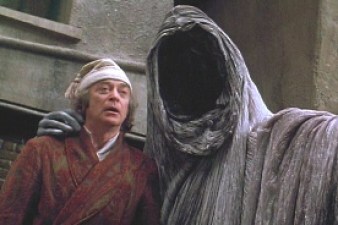
Scrooge’s weakness is his cruel disdain for his fellow man.
***
Understanding terminology, how others use it, and most particularly how you want to use it is important for deepening your understanding of how the many different pieces of story operate. As you can see from just this brief exploration, there is often a good deal of overlap amongst terms. However, each term also offers distinct nuance to help you expand your development of your own story and its characters.
Wordplayers, tell me your opinions! What Ghosts, wounds, Lies, and weaknesses have you used in your story? Tell me in the comments!Click the “Play” button to Listen to Audio Version (or subscribe to the Helping Writers Become Authors podcast in Apple Podcast or Amazon Music).
___
Love Helping Writers Become Authors? You can now become a patron. (Huge thanks to those of you who are already part of my Patreon family!)The post What’s the Difference? Your Character’s Ghost vs. Wound vs. Lie vs. Weakness appeared first on Helping Writers Become Authors.
June 12, 2023
The Daily Routine of a Full-Time Writer
 What does the daily routine of a full-time writer look like? I’m going to say the norm is probably somewhere in between crazy-busy and lots-of-staring-into-space. What should the daily routine of a full-time writer look like? No one can say. But I can tell you what mine looks like.
What does the daily routine of a full-time writer look like? I’m going to say the norm is probably somewhere in between crazy-busy and lots-of-staring-into-space. What should the daily routine of a full-time writer look like? No one can say. But I can tell you what mine looks like.
When I asked you what you’d like me to write about this year, I received a surprising number of requests for “a day in the life” post. James Richards wrote:
Give us a peek into your day and show us what a day of writing looks like for you. Your work habits, your goals per day & etc. Let us see how you format your workday.
I’ve been waiting to share this post until spring arrived, so I could also share some photos that actually have green in them. And since spring finally arrived (and the smoke from the Alberta fires finally left—sending love to all our friends up north right now), I decided now is the time!
So come along with me today as I show you what my routine looks like on an average day.
A Few Notes on High-Quality HabitsDaily routines are one of my favorite topics. In fact, I’m a bit of a routine nut. Mostly, this is because my INTJ brain goes little nuts (literally) without structure and stability and predictable patterns, but also because I truly believe in the power of high-quality habits. I have seen their rewards in my own life, not just in the short-term, but as years of good habits have paid off in all areas of my life.
Here’s a quote I picked up somewhere from Will Durant:
We are what we repeatedly do. Excellence then, is not an act, but a habit.
Here’s another one from James Clear, author of Atomic Habits:
The more control you have over your attention, the more control you have over your future.
My goal is to make sure every moment in my day, everything I do, every to-do on the checklist is as absolutely high-quality as possible. I’m always tweaking to try to maximize my time and energy to allow me to pack in only the best stuff. If something is low-quality with poor returns, I figure out a way to eliminate it or replace it. I live my life like I imagine a pro athlete eats their meals—every calorie and nutrient optimally has a purpose. One good habit that takes even just five minutes, done every day, offers huge returns down the line.
That said, I also have to be careful. Once I get a habit started, I am super consistent, which means it had better be the right habit. For instance, if I’m consistently doing the wrong exercise every day (or doing it wrong), I’m going to be doing myself more harm than if I was only sporadically remembering to do the right exercise.
It’s valuable to consider your daily habits and rate how high quality you think each one is (e.g., how healthy is your regular breakfast?). Then you look for ways to leverage little moments in your day. After all, as the fly says in A Bug’s Life:
The Daily Routine of a Full-Time WriterI only get twenty-four hours to live, and I’m not going to waste it here!
It goes without saying that I’m extremely privileged to be able to manage my days how I want. I work for myself from home, and I don’t have kids, dependents, or many outside demands on my time. This allows me a lot of flexibility in tweaking and adjusting my schedule. For instance, I used to write in the late afternoons, but as my thirties have ticked on, I find my brain is just too fried and exhausted to be sensible by then—so I’ve switched my fiction writing to the morning. What’s best for any one writer will always depend on their own energetic preferences, as well as outside demands upon them, including work and family.
Morning RoutineBreakfastI like to be out of bed by six and get my eyes on the sun as soon as possible. I putter around for a bit, oil pull for my teeth and gums, do skin care, and brush my teeth. Breakfast starts with a warm glass of lemon water, which I drink while standing in the sun. I follow that up with two baked eggs (farm fresh right now from the generous neighbors), since I wake up hangry and do not have the patience to stand over the stove. While I’m waiting for the eggs to cook, I’ll eat an apple. I end with some sort of carb; right now, I’m using a grain-free blueberry muffin mix from Bob Redmill.
Prayer/Meditation/Yoga/WorkoutNext up is what I have come to consider the most important part of my day. I take a full two hours at least five days a week to focus on prayer, various meditation/visualization/energy practices, yoga (or what I call yoga—it’s really just light stretching), and working out. I’ve struggled with chronic muscle pain in my neck and back for many years, but I’m managing it pretty well now, thanks in part to my diet (I cut out all sugar, grain, nightshades, and dairy for five months over the winter and saw huge changes in my pain levels) and in part to a workout routine that I feel is finally paying off. I alternate core, arm, and leg workouts by day.

This is probably my favorite part of the day.  After working out, I take half an hour to sit on my infrared heating pad and read whatever non-fiction books are grabbing my fancy at the moment. I’m always hungry again by this point, so I eat a nut-butter protein bar. I really like these from Lairds right now, since they do a pretty good job balancing carbs and protein.
After working out, I take half an hour to sit on my infrared heating pad and read whatever non-fiction books are grabbing my fancy at the moment. I’m always hungry again by this point, so I eat a nut-butter protein bar. I really like these from Lairds right now, since they do a pretty good job balancing carbs and protein.
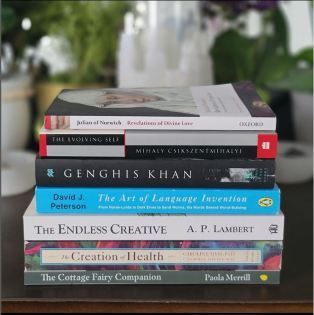
Actually, this is also my favorite part. I could walk for hours—but, alas, I usually only have time for about thirty minutes. I’m fortunate to be able to walk outside in nature. The trees and the grass are glorious right now, so green it almost makes my eyes hurt–which is a change from the usual drought (although apparently we’re still in a drought?). I use my walk as my time to talk to myself and clear my brain. I sort through ideas I may have encountered while reading, dig through anything that’s bugging me, and work through patterns and theories I’m playing with.

And now is the writing time of the writer’s daily routine. After showering and dressing after my walk, I settle in for an hour with my fiction work-in-progress. Right now, I’m in the process of outlining a new fantasy novel (tentatively called Wildblood, a Celtic-inspired tale about a dying princess and an immortal protector). I prefer to outline longhand in a notebook, away from my computer. Since I currently have an extra desk set up in my bedroom, I’m using it exclusively for my fiction writing. I like having the psychological cue that this is writing space and not check-your-email-and-do-business-stuff space.

I light a candle to set the container and play music I’ve downloaded onto my phone. I’m not much of a phone user, so I’m not usually too tempted by keeping it at my elbow. But I always put it on airplane mode, both because I always do that to mitigate EMF exposure where I can and to keep from being distracted by notifications.
Right now, as I’m outlining, my routine is pretty simple. I will glance over my notes from the day before and dive in. I’m pretty loosey-goosey in the outlining stage and don’t put much pressure on myself to be perfect or to always write on topic. I ramble a lot, veering away from the story sometimes to discuss thematic theories or even writing techniques with myself.
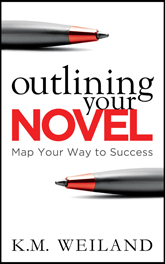
Outlining Your Novel (Amazon affiliate link)
I have, of course, written about my outlining process extensively elsewhere. Basically, I look at outlining as brainstorming. My outlines are a conversation with myself on the page. I ask myself questions and follow my curiosity wherever it leads, using my sense of the story’s structure to always come back to what blanks might still need filling in.
At the end of the hour, I will glance over the day’s notes and highlight those I want to keep for later. Every few months, I will stop and transcribe the highlighted notes into my Scrivener outline for easy reference.
Afternoon RoutineWork: Blog Project/Social Media/Other ProjectsAfter lunch, I’ll take another quick walk outside to check the mail, then head to my computer desk to get to work. I like to start out working on that week’s blog post and podcast episode. One day I will write the post, the next I will edit it, then record the podcast, then edit the podcast, etc. I will also use this time, before my brain fries out too bad, to work on social media posts. If I have time here, I may also work on whatever other projects need my attention. Sometimes this might be a new project underway, but more and more, it is maintenance or upkeep on existing material I’ve published whether on this (now gigantic) site or in my books.

By 3PM, my head usually feels like it’s ready to fall of, so I take a thirty minute coffee break. I’m obsessed with the British Baking Show (even though I don’t bake) and have been watching it and its spinoffs pretty much non-stop for over a year. Right now, I’m extra in love with the Junior Bake Off. I usually split the episodes in half, both to make them last longer and to make sure I’m back to finish work in a reasonable amount of time.
Let me just say that for someone of my personality (who tends toward workaholism), letting making myself taking this break in the middle of the afternoon has been a game changer. It totally recharges my energy both physically and emotionally (because JBO is hilarious!), lets me rest my eyes for a bit, and gets me moving at least a little bit away from desk.

I return to my desk around 3:30 to tie up the day’s loose ends. Usually, I will sort and answer emails at this point, as well as look through my “daily” sites, such as those for the weather and personal banking. I keep several different email accounts, which allows me to sort my emails into categories—business stuff, social media stuff, and subscriptions/shopping stuff. I don’t let myself look at the subscriptions/shopping one until last, since it can see me opening a dozen tabs I want to look at and explore.
Sometimes I will use this last bit of the afternoon to work on projects, but I also let myself use this time for educational purposes. If there’s a YouTube video I want to watch, a course I’ve purchased, or just an article I want to study, this is in when I work on it.
Evening RoutineSupper and Household ChoresI quit the computer at 5:30, eat supper, then usually spend thirty to forty minutes catching up on other chores, like laundry and house cleaning.
TV/Tiny Bit of Phone TimeThen it’s finally time to collapse on the couch (on my infrared mat again) for a hour and a half or so to watch TV (I admit it: kinda a Jeopardy! nerd), before starting my evening routine. I usually let myself have a tiny bit of phone time first, usually just browsing online shopping that I might not have had time to really do (or enjoy) earlier. My phone is off by 8:20PM. I put on my heavy-duty blue light glasses and don’t look at another screen for the rest of the night.
Final PracticesI try to journal every night. I’ve journaled sporadically throughout my life, before completely falling off the wagon for a few years when I was going through a tough time. But then, toward the end of that rough patch, I started writing at least a page every day. I believe it is a practice I will continue throughout my life. Not only is it cathartic and brain-clearing in the moment, but I have found so much support and context for my own process by being able to look back through old journals and see where my head was at during certain challenges and decisions. I make it a daily point to read the journal entry from one year previous, and it is often so enlightening and comforting (and humbling) to see how I have changed (or not changed) in regard to particular struggles or goals.
EarthingDuring the summer months, I get to do one of my favorite things ever, and that is walk outside at night with no light but the moon and the stars, and no company except the trees talking to the night birds. (At the house I lived in previously, I got to walk in a centuries’ old graveyard. Oh yeah.) This year, I bought myself a pair of leather earthing shoes so I can get the added benefit of grounding out the day’s electricity while strolling.
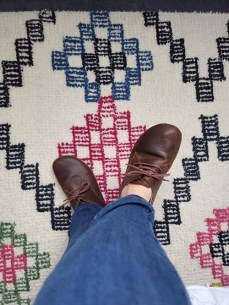
By now, it’s nearing 9:30PM and I’m pretty zonked. I end my day reading fiction and try to be in bed by 10:30. (A little earlier would probably be better, but the books are just too good, you know?)
***
So there’s my day in the life. Obviously, this is my “ideal” routine, with no interruptions from outside sources or appointments or shopping trips, etc. It’s a good day. It’s a day I’m always happy to wake up to and always feel satisfied at the end of. I hope this little peek into my life right now was interesting and that perhaps you picked up one or two ideas that feel inspiring for your life as well!
Wordplayers, tell me your opinions! What does your daily routine look like? Tell me in the comments!Click the “Play” button to Listen to Audio Version (or subscribe to the Helping Writers Become Authors podcast in Apple Podcast or Amazon Music).
___
Love Helping Writers Become Authors? You can now become a patron. (Huge thanks to those of you who are already part of my Patreon family!)The post The Daily Routine of a Full-Time Writer appeared first on Helping Writers Become Authors.
June 5, 2023
Imposter Syndrome for Writers Is a Real Thing (+ the Key to Slaying It)
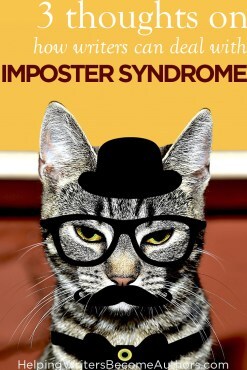 Imposter syndrome.
Imposter syndrome.
It’s a trending phrase these days. You see it everywhere. Just hearing the words may evoke a twinge of recognition, along with an accompanying clench of nausea in your gut.
A tremendous number of writers identify with the idea of imposter syndrome. Foundationally, this is the feeling that you aren’t good enough, that whatever praise or success you may have achieved was nothing more than a stroke of luck, and that sooner or later people will “find you out” as a fraud or at best a one-trick pony.
It’s no wonder writers seem to be disproportionately affected by imposter syndrome. For starters, we put our most vulnerable bits on display for a living. More than that, we work in a craft that not only requires high-level and often delicate skills, but also one that is often judged arbitrarily, with opinions based more on people’s emotional experiences than on any set standard. If you make money from your art, even that can often fail to provide any kind of stable measure of your success. Your first book may be a bestseller, but the next may not be.
In fact, the more success a writer achieves, the more aggressive imposter syndrome can become. After all, the more people who “believe” in your success, the more you have to live up to. And yet, it can sometimes feel like you’re the only one suffering. You look around on social media, and all your peers or idols seem to be happily sailing through their careers with few or any doubts, sharing win after win. You may think, Well, they seem to have it all together, so I must really be an imposter.
Maybe you’re just starting out and battling the belief that “I could never be a writer.” Or maybe you’re on your dozenth book and making enough to write full-time but constantly fighting the feeling that “I’m not worthy” or “I’ll never really be good enough.” Either way, you’re not alone.
I’m just going to say this upfront: there’s no quick fix for imposter syndrome. There’s no snapping your fingers and declaring, “Begone!” Why? Because imposter syndrome isn’t caused by external factors. It’s not the result of how well you write, how many books you’ve sold, how many good reviews you’ve received, or how much money you make as a writer. Imposter syndrome lives much deeper inside, like a resident parasite. This means banishing it requires concentrated and ongoing efforts to understand its true causes.
This post has been on my mind for quite some time. One of the reasons I want to share it is because I believe it’s valuable for writers who are perceived as successful to own that they, too, may feel like imposters. This is important because it highlights the fact that the feelings of imposter syndrome have nothing to do with actual metrics of success. Indeed, harking back to our discussions of the shadow in the last two posts, working through imposter syndrome is very much about working through one’s own personal shadow.

Writing Archetypal Character Arcs (affiliate link)
So I’ll just give you this one for free: although I have been a full-time writer for over a decade, sold over half a million books, been published in seven languages, won awards, blah, blah, blah—I face down imposter syndrome every day of my life. I’m scared every time I launch a book, such my latest Writing Archetypal Character Arcs. Negative reviews still put me in a tailspin. Every time, I publish a post (including this one), there’s a voice in my head telling me I’m not saying anything particularly smart or valuable or original—that one of these days, people are going to figure out I’m an uneducated hack who makes no sense—that the only reason I’m a successful writer at all is thanks to sheer dumb luck.
Obviously, there are other (louder) voices that keep me going. And I only share this because I want other writers (especially those who perhaps don’t yet have enough outward metrics of success to help them argue against the inner critic) to know they are not alone and that the voice of imposter syndrome is not some clarion of truth that must be heeded.
The other reason I’m sharing this post now is because some of my own personal work with imposter syndrome recently bore some fruit that gave my thoughts enough shape for a full post. I actually had another post scheduled for this week, but after encountering powerful insights from two separate sources this week, I wanted to hammer out my thoughts while they were still hot.
The Reason You Feel Like an Imposter? You AreI know that reads like click-bait. I know it probably feels uncomfortable. I know it’s an extreme statement.
But… it’s probably true.
We are imposters if we are pretending to be something we are not. In some instances, this may fall under the old dictum of “fake it ’til you make it,” which may inspire us to pretend we have it way more together than we do. But it may it also result when we have, in fact, refused to integrate our own good qualities or successes, in which case we may be pretending, even to ourselves, that we are not as good as the facts clearly say we are.
Regardless, the experience of imposter syndrome indicates a lack of cohesion between inner and outer realities. Sometimes this lack of cohesion results from our fears about claiming a true identity (whether that of a noob or an expert). However, it often points to a lack of understanding about this inner conflict between old/safe identity and newly-emerging/totally-scary identity. We may not even recognize that these two competing identities are the mutual creators of our often nauseating uncertainty of how tell which voice—the encourager or the critic—is telling us the truth.
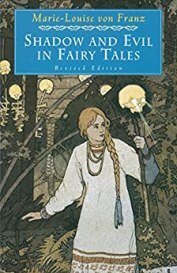
The Shadow and Evil in Fairy Tales by Marie-Louise Von Franz (affiliate link)
This week, in reading Deena Metzger’s Writing for Your Life, I came across her description of the imposter syndrome experienced by Marie-Louise Von Franz, “the renowned student of Carl Jung.” In Metzger’s words:
Marie-Louise Von Franz… tells how she is attacked by the critic every time she sits down to a new work. “You don’t know anything; you can’t write; that’s stupid” is how the critic belittles one of the most brilliant people of our time. This, she says, sometimes goes on for days. But she persists, to our good fortune, and the work appears.
As I read this, I was struck by how all the world sees a woman like Von Franz—how I see her: as someone who gave so much to the world through her writings. From our view, on the outside looking in, the woman was certainly not an imposter. She was brilliant mind, with whom few could keep up. And yet, she was an imposter… to herself—because some part of her insisted on believing, on pretending, that she was not this brilliant mind, that in fact her contributions were worse than worthless.
Often, we hear this term “imposter syndrome” and think the “cure” must be just getting over the idea that we are an imposter. However, I think the cure is the opposite. The cure is recognizing we are imposters, but perhaps not in the ways we initially assume.
The Critic As the Shadow ProtectorImposter syndrome is really just another name for the hell our inner critics like to put us through. I have spoken before about how the inner critic can, in fact, be an ally. When we are able to cultivate a good relationship with our inner critic, it becomes an advisor able to offer us invaluable guidance.
Again, this points to shadow work, because a critic whispering abuses in our ears is clearly not a helpful or integrated part of our conscious personalities. Even still, its very presence indicates there must be some corresponding good stuff hiding out in our unconscious shadows, waiting for us to rehabilitate and reintegrate it.
What if we stopped viewing the critic as the bad guy? We can (and should) still call it out on its unacceptable behaviors, while also acknowledging that its deeper motives may be to help and protect us.
Imposter syndrome is usually the sign of an identity shift. Either our identity within the world has shifted or we seek to do something that will shift it (aka, become a published writer). To adopt a new identity, even a positive one, means allowing an old identity to die. Any shift in identity can be experienced by the ego as life-threatening. Particularly as writers, we are recreating ourselves with every new thing we write. What if imposter syndrome is popping up just to try to keep us safe?
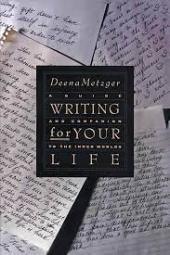
Writing for Your Life by Deena Metzger (affiliate link)
Here’s a thunderclap from Metzger:
The critic may have developed as a protector when we were young to help us avoid situations in which we would have been utterly powerless.
Boom. And isn’t that the truth? When that horrible nagging voice shows up and tells us we shouldn’t do that, that we’re only going to embarrass ourselves, that really we’re not as good as we think we are—isn’t it ultimately trying to steer us away from situations that seem as if they may hurt us?
The trick here isn’t, of course, agreeing with the critic, throwing up our hands in defeat, and walking away (like Rex in Toy Story 2: “Oh well, we tried.”). Rather, the trick is in diving into the depths of ourselves to rescue and rehabilitate the shadow protector into a truly powerful and helpful ally.
Slaying Imposter Syndrome With an Understanding of Who You Really Are (aka, Where You’re Really At)If imposter syndrome is all the result of a faulty approach to how you interact with your personal identities, then the key to slaying it is simply understanding who you really are (cue that most timeless of all memes: “Always be you. Unless you can be Batman. Then be Batman.”)

Now, as an Enneagram Three and therefore someone who has spent a lot of her life pondering identity, I can tell you that figuring out “who you really are” can often feel like looking for a needle in a needlestack. After all, it may very well seem that you are both of these identities competing for your attention. You are both a talented writer and a struggling nobody. You are both someone who knows what they’re talking about and someone who is full of beans. You are both someone who is confident she knows what she knows and someone who is riddled with doubt.
This is because humans aren’t any one thing at any one time. Rather, we exist on a timeline. We are constantly becoming. Therefore, it can be more grounding to think less about what particular identities you inhabit and more about where you’re at in the process.
When it comes to any public enterprise in which success is measured by outside metrics such as sales, one of the best models I’ve ever encountered is one I just heard about yesterday on revolutionary business coach Simone Grace Seol’s podcast I Am Your Korean Mom, in which she outlined her model for Three Stages of Growth.
According to Seol, those stages are:
1. Creation (when you’re writing the book, building the business, etc.)
2. Acclimation (when you’re adjusting to the new identity of success)
3. Acceleration (when you’re taking everything you’ve learned and going 2.0)
The first two phases are where imposter syndrome are most likely to strike.
In the creation phase, you may feel like an imposter for the simple reason that you are treading into uncharted territory. You are daring to believe you can change your identity—which freaks out the critic and makes it want to slam on the brakes. The good news here is that all you have to do is keep going. Eventually, you will be someone who has completed a book, someone who has mastered the skillsets of writing, someone who knows that they know how to write book.
But then comes the acclimation phase. According to Seol, acclimation is a phase few people know about—and therefore few people know how to handle. She says:
Now, how many of you … have achieved a really big goal or created something that you really wanted for a long time only to be surprised that you feel really, really terrible? So many of us think that hitting the goal is going to be the best thing ever, but then we realize that once we do hit the ambitious goal it starts to feel really, really scary and anxious and we just kind of have a meltdown a lot of the times. It’s a real thing. The pain of acclimation … is that now that you’ve created the thing that you wanted to create, now that you achieved the goal, now you have to get used to … being somebody who has that as part of her reality.
As we’ve already seen, imposter syndrome is likely to be caused by competing identities within a person’s psyche. If you can identify where you are within the process, you can gain clues as to which identities are struggling to become fully integrated. Doing this requires the ability for deep introspection, radical self-honesty, and time to let the pieces of one’s self digest and reassemble. This is the work that will allow imposter syndrome to cease being a painful enemy and instead become a useful tool for growing one’s self throughout the journey of the writing life.
Wordplayers, tell me your opinions? Have you ever struggled with imposter syndrome as a writer? What did it teach you? Tell me in the comments!Click the “Play” button to Listen to Audio Version (or subscribe to the Helping Writers Become Authors podcast in Apple Podcast or Amazon Music).
___
Love Helping Writers Become Authors? You can now become a patron. (Huge thanks to those of you who are already part of my Patreon family!)The post Imposter Syndrome for Writers Is a Real Thing (+ the Key to Slaying It) appeared first on Helping Writers Become Authors.
May 29, 2023
5 Ways to Use Your Character’s Shadows to Power Your Story
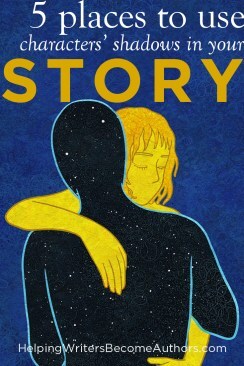 Complex characters mirror real-life humans in their contradictions of inner light and dark. As writers, it is our job to create these contrasts in ways that become cohesive and thematically meaningful. One of the simplest—and most effective—ways to do this is to explore shadow theory.
Complex characters mirror real-life humans in their contradictions of inner light and dark. As writers, it is our job to create these contrasts in ways that become cohesive and thematically meaningful. One of the simplest—and most effective—ways to do this is to explore shadow theory.
In last week’s post, we talked about the concept of “the shadow,” a phrase originated by C.G. Jung. The shadow refers to the parts of the self that are not present in the conscious personality or ego, but instead are hidden away in the dark of the unconscious. The concept of the shadow suggests that the parts of ourselves that are repressed or neglected in the unconscious actually wield tremendous power over us.

Was That Really Me? by Naomi L. Quenk (affiliate link)
Many different personality models offer tools for exploring these lost pieces of ourselves and doing “shadow work” to return them to our consciousness, so we can wield them consciously and reclaim their lost power. The MBTI system (based on Jung’s idea of cognitive function polarities) talks about how you might be “in the grip” of your shadow functions. This can even cause you to momentarily seem to have a completely opposite personality, as discussed in Naomi L. Quenk’s book Was That Really Me?
Additionally, the Enneagram‘s entire philosophy is built around recognizing that our personality type is “not us” and offers a map to expanding ourselves beyond the basic idea of our visible personalities.
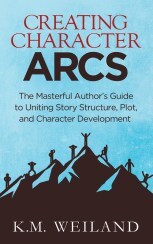
Creating Character Arcs (Amazon affiliate link)
Because good stories explore the human psyche and particularly catalysts of psychological change, writers can use any or all of these tools to write better character arcs. As we spoke about last week, “shadow theory” provides an incredibly simple and useful tool for immediately recognizing how a character’s surface personality always points to corresponding shadow characteristics that can be explored in the story.
A Quick Recap of Shadow Theory for WritersIn case you didn’t read last week’s post—or just want a refresher—here is a quick reminder of how shadow theory works.
Simply, shadow theory suggests that whatever is most prominent in your character’s conscious personality indicates that the exact opposite trait is probably lurking in the shadow.
Last week, we talked about such polarities as:
1. Strength/Weakness
E.g., Intelligence/stupidity; Athleticism/clumsiness; Self-sacrifice/selfishness, etc.
2. Fear/Power
E.g., Fear of commitment/loyalty; Fear of failure/ambition; Fear of death/courage, etc.
3. Conviction/Hypocrisy
E.g., Preaches the 7th Commandment/hides an affair; Blames big corporations’ greed/cheats boss, etc.
4. Projections of Hate or Love Onto Others
E.g., Believes women are weak/hides inner weakness; Idolizes powerful authority figure/ignores inner potential for empowerment, etc.
View this post on Instagram
A post shared by KM Weiland (@authorkmweiland)
The great advantage of shadow theory is how easily it simplifies even complicated personalities by pointing to the inner dichotomies driving a person. However, it should go without saying you don’t want to over-simplify a character. Not every instance of these traits, or others like them, will point to corresponding shadow traits.
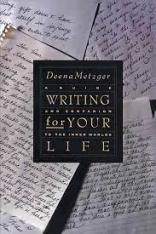
Writing for Your Life by Deena Metzger (affiliate link)
In Writing for Your Life, Deena Metzger notes:
Whether fictional or organic, the shadow never dies; we always cast a shadow. But how we relate to it and it to us depends on whether it is known. Once known, we have inevitably lost an innocence that can never be recovered. What replaces this innocence, however, is the knowledge of the complexity of our nature, of human nature. Sometimes we are fortunate, and this knowledge elicits a kindness and tolerance in us for others—even, perhaps, for ourselves.
Double-check by asking how much the character identifies with these traits. If he is fluid and willing to entertain other points of view, or if he is genuinely self-deprecating and can even laugh at himself when a trait is pointed out, he is likely to be well-rounded in this area of life. This indicates the corresponding shadow issue has already been integrated into the conscious personality.

A Little Book on the Human Shadow by Robert Bly (affiliate link)
However, if the personality seems particularly ossified around the trait in question, then you’ve probably stumbled upon the potential for shadow exploration. For example, if a character can’t stand to have her selflessness questioned, or if he refuses to brook any argument about why he might not actually be as dumb as he insists he is, or if she refuses to examine her own inconsistencies or hypocrisies, or if he insists on seeing certain people as “the other” rather than three-dimensional humans—these are all signs of what might be hanging out in the person’s shadow. As shadow-meister Robert Bly says,
5 Ways to Use Your Character’s Shadows in a StoryEvery part of our personality that we don’t love will become hostile to us.
Now that you understand how to use shadow theory to quickly identify characters’ inner conflicts, let’s dive deeper. How can you practically apply this understanding of your characters’ shadows in your story? Here are five places in your story where you can use shadow theory to create amazing complexity and thematic resonance.
1. Add Realism and Depth to Your Characters’ MotivationsWe often hear it said, “Conflict is story.” If we walk that back, we see that the conflict is driven by the characters’ goals—by what they desire. And desire is created by motive. So, really, we could just as easily say, “Motivation is story.”
A solid motivation can make or break your story. As long as readers believe in your characters’ reasons for doing what they’re doing, you can have your characters chasing after all kinds of bizarre goals and readers will happily suspend disbelief. But if the motives don’t make sense, then readers will scoff at at even otherwise sensible actions.
Motives are tricky, simply because they are often incredibly complex. We humans may want something for any number of reasons all at the same time. Sometimes we are conscious of those reasons; sometimes not. Sometimes we think we know why we’re doing something, when really we’re only partly conscious of our true motivations.
That’s where the shadow enters in. What lies in our unconscious is a powerful driver of our motivations. The reasons we desire a certain romantic relationship or a particular job or our independence or a popular status symbol—are often driven as much by what’s in the shadow as by the explanations offered by our conscious personalities.
Consider your characters’ desires: What do they want?
Now consider their motivations: Why do they say they want this thing?
Now flip that claim on its head: What does shadow theory say they want and why they want it?
For Example: I used this one in my gaslamp fantasy Wayfarer, about a poor village lad determined to win the hand of an earl’s granddaughter. His conscious reason for pursuing her is that he thinks she’s beautiful and wonderful; but his unconscious reason, which he does not admit to until the end, is that marrying her would ease his insecurities about his own “low” status as a blacksmith’s apprentice.

Wayfarer (Amazon affiliate link)
2. Create Secrets and Suspense in Your Characters’ BackstoriesBackstory exists mainly to explain a character’s motivations. We can create this via what John Truby calls “the Ghost” in the character’s past. The Ghost is a catalytic event that has molded the character into exactly the sort of person who would want to achieve the plot’s main goal. As its haunting name suggests, this motivating factor is often dramatic and even traumatic. It is also, almost inevitably, a signpost to when and why the character put some important part of her personality into the shadow.
In real life, shadow work revolves around learning to see what is in one’s own shadow. This often requires a bit in the way of forensics. What occurred to cause this piece to end up locked in the cellar of the psyche? Examining your character’s shadow can help you determine what backstory event might provide the best explanation for their main-story motivation. You can also flip this and consider what a known backstory event might reasonably cause to end up in the character’s shadow—where he doesn’t have to acknowledge or identify with it.
If you’re writing in a close or limited POV, then you know that one of the trickiest bits is finding ways to keep backstory secrets from readers even though your narrating character was there when the Ghost happened and therefore knows all about it. Understanding your character’s shadow can help with that too. After all, the whole point of the shadow is that it is unconscious. This doesn’t mean your character is necessarily repressing her memory of events; but she may not have full consciousness of the what, why, and how of this event.
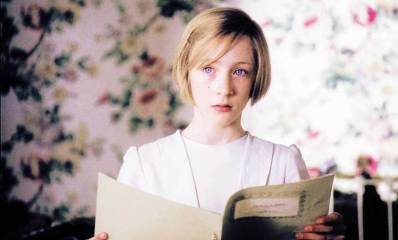
Atonement revolves around an event in the protagonist’s childhood, in which her own misconstrual of events led her to wrongly accuse a young man of rape. She spends the rest of her life wrestling with her perceptions, trying to understand them and make them right.
3. Bring Subtext to Potentially Two-Dimensional CharactersIn fiction, we usually want our protagonists to be good and our antagonists to be bad. However, these simple characterizations are almost always unsatisfying if that’s all these characters are. Savvy readers want to experience characters who mimic all the rainbowed complexity of real life. Exploring your characters’ shadows allows you to round them out.
When writing “good” characters, you can flip their best traits on their heads and explore the repressed shadow qualities that carry the opposite charge. Same goes for your “bad” characters; a quick application of shadow theory reveals how even their most wicked traits bring with them the shadow of the opposite virtue.
Rounding out your characters in this way does not mean they need to act out these opposite traits in the story (although one or two such actions will often bring depth). Simply by exploring the inner conflict your characters experience within themselves over these un-integrated traits, you can create a lasting effect of complexity.
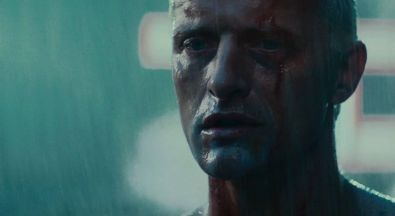
In Blade Runner, the inhuman Batty exhibits more humanity in his appreciation of life as he dies in the rain than does the protagonist Deckard who heartlessly executes him as part of his job.
4. Deepen Theme by Adding Nuance
Writing Your Story’s Theme (Amazon affiliate link)
Theme arises from the contrast between a character’s actions in the external plot and his inner conflict and (potentially) growth. In other words, theme arises from the contrast between a character’s conscious and unconscious.
A Positive Change Arc is all about growing a character’s consciousness of her shadow traits—so she can integrate them into and thereby expand her conscious personality. Negative Change Arcs, on the other hand, highlight the character’s resistance to exploring the shadow and his ultimate failure to expand his consciousness as a result.
The best character arcs create deeply nuanced themes exactly because they delve into the polarities and dichotomies of the shadow. Good thematic explorations examine all sides of an issue (or at least four, as in Robert McKee’s thematic square). Understanding how to use shadow theory to plumb your characters’ unconscious motivations can help you figure out which topics are organic to your story’s plot and character arcs, so you can make sure you’re not missing out on any of the most important contrasting pairs.

In many ways Wuthering Heights is an exploration of the shadow made manifest, as the ruthless cruelty and prejudice that is acted out unconsciously (in the sense that they do not own their actions as such) by characters early in the story become consciously personified in the vengeance of the orphaned and unloved Heathcliff.
5. Create Thematically Resonant Minor CharactersMinor characters are particularly important for fleshing out the thematic depth of your story’s world. There are several ways you can use shadow theory to influence how you craft your supporting cast.
1. Examine Minor Characters’ Shadows
You don’t want your supporting characters to be two-dimensional anymore than you do your main players. In some ways, creating three-dimensional minor characters can be even trickier, since you must convince readers of their depth with much less explanation. Looking to your minor characters’ shadows to examine their inherent dichotomies is a quick and easy way to bring life to even a walk-on role.
2. Examine Minor Characters’ Thematic Roles
Your supporting cast is one of your most important tools in fleshing out your thematic argument. Choose characters who can act out various aspects of the theme your protagonist is wrestling with. Some characters should represent conscious personality aspects of the theme; others should represent shadow potentialities—both light and dark.
3. Examine How Your Protagonist Projects Shadow Traits Onto Minor Characters
Finally, use minor characters to exemplify how your protagonist may not be taking ownership of her own shadow traits. Because whatever is in the shadow is unconscious, the person will often project these traits onto others—believing, for instance, that others are stupid or angry or untrustworthy or perhaps even angelic or fearless or strong, when really these traits are arising from the person’s own unconscious. It is possible, of course, that the minor characters are embodying these traits to some degree, but this only enhances their ability within the story to mirror to the protagonist’s own unconscious proclivities or potentialities.

Toy Story is built around the shadows of main character Woody, who projects onto cheerfully oblivious newcomer Buzz his own insecurities that he is “just a toy” to his beloved owner Andy as well as his need to be in charge.
***
In so many ways, story is primarily an exploration of humanity’s collective shadow. We uses stories as a way to express the contents of our own unconscious, but also as a tool to recognize our shared shadows and to do the “shadow work” of reclaiming all parts of ourselves. Understanding this important aspect of the psyche provides an incisive tool for rounding out our stories.
Previous Post in This Series: “How to Create Insanely Complex Characters Using “Shadow Theory’”
Wordplayers, tell me your opinions! Where and how do your characters’ shadows show up in your story? Tell me in the comments!Click the “Play” button to Listen to Audio Version (or subscribe to the Helping Writers Become Authors podcast in Apple Podcast or Amazon Music).
___
Love Helping Writers Become Authors? You can now become a patron. (Huge thanks to those of you who are already part of my Patreon family!)The post 5 Ways to Use Your Character’s Shadows to Power Your Story appeared first on Helping Writers Become Authors.
May 22, 2023
How to Create Insanely Complex Characters Using “Shadow Theory”
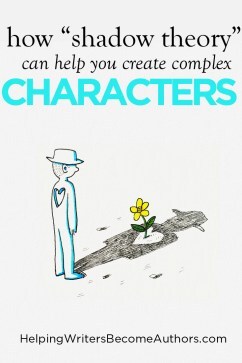 Complex characters are the beating heart of good fiction. The simplest and most effective ways to engineer this complexity is to create contrast, and one of the most intuitive tools a writer can use for identifying which contrasting elements are organic to any given character or story situation is… shadow theory.
Complex characters are the beating heart of good fiction. The simplest and most effective ways to engineer this complexity is to create contrast, and one of the most intuitive tools a writer can use for identifying which contrasting elements are organic to any given character or story situation is… shadow theory.
The “shadow” is a term coined by C.J. Jung to describe aspects of the personality that remain in the dark of the unconscious. These are aspects of the self that are repressed or perhaps even denied. They are aspects we often do not even recognize as part of our personalities. They may be aspects we think of as “bad” (such as anger), but may also be things we might generally consider to be “good” (such as power).
We start putting aspects of ourselves into the shadow when we are very young. As we instinctively decide—and are molded to choose by the world around us—which traits are valuable for our survival and success, we begin both to shape our conscious personalities and our correspondingly unconscious shadows. For example, we may learn early on that a quick temper doesn’t get us what we want in social situations, in which case our personality is molded around diplomacy while our rage goes into the shadow. However, we may also shape ourselves around less functional ideas. For example, if someone discovers their beauty attracts the wrong kind of attention, the personality may take on traits focused on blending in, while the person’s confidence in their attractiveness goes into the shadow. Emotions of all sorts, if we feel shame or fear of expressing them, often end up in the shadow.
Very often, we identify with our conscious personalities to the point that we believe this is all we are. As a result, we tend to experience our shadows rather like young children playing peekaboo. The children cover their eyes and giggle while the adults dutifully gasp, “Where did you go?!” The children believe that what they can’t see is, in fact, invisible. The shadow can sometimes feel like that. We can’t see it, so it must not be there. And yet, everything we stuff into our shadows is still a part of us. Often, it comes bursting out when we least expect, creating behaviors that “just aren’t like us.” Sometimes we might even say, “That’s not me.”
Shadow work is a deep practice designed to reacquaint us with these lost parts of ourselves and to reintegrate their hidden gifts and power. (The Enneagram is a great tool for helping with this work.) Even seemingly negative traits such as anger, when banished to the shadow, take with them some of our innate power. Just as importantly, when we consciously reclaim these parts of ourselves, we bring them back into the light of our awareness where we can choose when and how to implement them in our lives, instead of being governed by them as unconscious impulses.
What Is Shadow Theory?So how can this help you write complex characters? Simply in understanding the shadow as a psychological concept, you can use it to bring depth to your characters’ inner journeys. There’s a little trick I like to use that makes it quite simple to figure out exactly what is in the shadow—your characters’ or anyone else’s.
I call this trick shadow theory, and it’s simply this: whatever is visible in a person’s external personality is an indication that the exact opposite resides in the shadow.
For instance, let’s examine two potential characters. Let’s say one is obviously stoic, tough-as-nails, and acerbic. Shadow theory says that what this person is holding back in the unconscious is therefore emotion, fear, and tenderness. Another character may be obviously cheerful, self-sacrificing, and needy, indicating that what the person does not want to acknowledge in the shadow is sadness, selfishness, and independence.
In these instances, you can see right away why people usually want to identify with their conscious personalities and disassociate from the seemingly “negative” shadow that corresponds. However, apart from the fact that these “negative” shadow qualities are still there, no matter how repressed, it’s important to recognize they have also taken with them half the power and effectiveness of the idealized traits showcased in the external personality.

Creating Character Arcs (Amazon affiliate link)
Because character arcs are usually explorations of how people may reclaim parts of themselves to become more whole, exploring the shadow is fertile ground for any story. You can leverage the polarity of any conscious personality trait and its unconscious shadow trait to create instant and deeply organic inner conflict for your characters.
The more characters identify with a conscious personality trait, the more the corresponding shadow looms large. It’s a simple fact: the bigger something is, the bigger the shadow it casts. In fact, the more “possessed” a character’s ego becomes by a personality trait, the more obviously the shadow will become the motivating factor—to the point that everyone around the character may recognize the shadow trait even if the character insistently denies it, as when a person screams, “I AM NOT ANGRY!”
I am reminded of Spencer Tracy’s line from Bad Day at Black Rock:
You’re not only wrong. You’re wrong at the top of your voice.
When that happens, that’s the shadow talking.
The Shadow Holds Good Stuff TooThanks to its name, the shadow is often correlated with negative traits. However, it bears repeating that the shadow is not an inherently negative aspect of the psyche. So much good stuff resides in the shadow—not just dangerous qualities that need to be rehabilitated, but also potentially such traits as self-esteem, empowerment, strength, gentleness, curiosity, vitality, even joy. Anything that felt unsafe to us early in our lives when our personalities were forming may have been banished, in part or in whole, to the shadow.
However, even the obviously good bits in the shadow can get cranky after being left in the dark for years, even decades. Learning to reintegrate all lost pieces of ourselves in a way that is safe for our own expression and respectful of others is a deeply rewarding journey, but one that often moves us into the cautionary spaces of our inner maps where “here be dragons.”
6 Questions to Help You Discover Your Character’s ShadowsHopefully, you can already see the immediate applicability of shadow theory in sussing out your characters’ secrets, wounds, and potential growth arcs. To help you get started, here are six questions you can ask about your characters to hone in on their shadows. Remember: in asking about an obvious externalized trait, you will always find the hidden shadow trait in its polar opposite.
1. What Is Your Character’s Greatest Strength?Functional personalities are built around a person’s strengths. This means you can look to your character’s corresponding weaknesses to discover what’s in the shadow.
For example, if a character identifies primarily as smart, athletic, helpful, funny, or dependable, then corresponding shadow weaknesses to explore would include fears or denials of the parts of the character that are ignorant, clumsy, dispensable, awkward, or selfish.
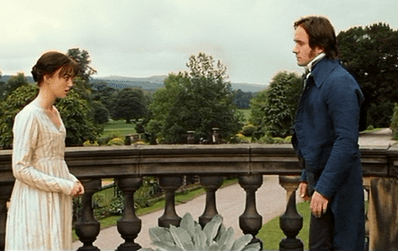
In Pride & Prejudice, Elizabeth Bennet identifies strongly with her own intelligence and keen perception—only to be blindsided by revelations of her mistaken presumptions about Mr. Darcy, as well as her hypocritical prejudice against him.
2. What Is Your Character’s Greatest Weakness?Although we usually try to identify with our strengths, almost everyone is also hyper-conscious of several aspects of ourselves we consider to be weaknesses. However, these weaknesses can often shine a light on corresponding strengths we’ve banished to the shadow, usually out of fear of fully showing up in some way.
For example, a character who identifies with the weaknesses mentioned above—feeling unintelligent, clumsy, unneeded or easily overlooked, socially awkward, or selfish—might be hiding in their shadow their corresponding talents and capabilities.
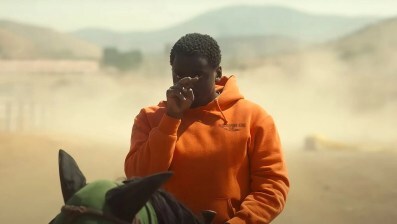
In Nope, OJ’s social awkwardness makes him terrible at running his family’s business of supplying stunt horses to movie producers, but it hides the shadow strength of a deep intuitiveness and attention to the natural world—which becomes a superpower when pitted against a monster from space.
3. What Is Your Character’s Strongest Conviction?What’s the one thing your character could go off on a rant about at a moment’s notice? Particularly take note of any topic about which the character will brook no argument. To the degree a character is open-minded or willing to consider another viewpoint, their convictions are likely not pointing to corresponding shadows. But if the character refuses to entertain the opposite view, this may point to a corresponding shadow within the character.
Sometimes this contrast can be utterly hypocritical (e.g., a minister preaching the 7th Commandment who keeps a secret mistress), but it may also be driven by a semi-conscious sense of shame or guilt (e.g., a veteran doing humanitarian work to “pay for” the lives he’s taken in war).

St. John Rivers, in Jane Eyre, is a passionately devoted missionary who wishes to spread God’s love—and yet he refuses to acknowledge his own capacity for love, instead proposing a loveless marriage to his cousin Jane to avoid any distractions from his holy mission.
4. What Is Your Character’s Biggest Fear?The biggest bogey-man in anyone’s life is almost always the one who lives in that person’s own shadow. When we learn to face and conquer the shadow monsters, what we fear in the real world often turns out to be less capable of hurting us than we always thought. Often, this because what we thought was the monster in the shadows was, in fact, the very lost piece of ourselves we needed to face the outer antagonist. (Talk about the perfect opportunity to unite a story’s inner and outer conflict!)
Although you can, of course, go specific with this one (e.g., a character who fears commitment may, in fact, find a shadow capacity for tremendous loyalty), any fear will always indicate that what is in the shadow is personal empowerment. If a character is afraid, it is because they have put a piece of their own power into the shadow—and must reclaim it in order to face the fear.
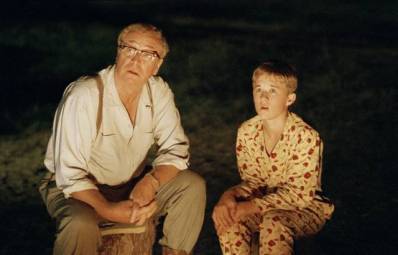
In Secondhand Lions, untrusting Walter, who’s greatest fear is being abandoned by those who profess to love him, finds within himself the courage and loyalty to be the one to refuse to betray and abandon his great-uncles.
5. Who or What Is Your Character Most Likely to Vilify?Who does your character hate? Who are they most likely to blame for everything wrong in the world? Although this hated person may be a specific person within the story, also consider the generalities this person may represent. What stereotype is your character hating in the other person? Very often a shadow of this same vilified trait will exist within your protagonist. This is the essence of the advice to “make your antagonist a mirror of your protagonist” in some way.

Writing Archetypal Character Arcs (affiliate link)
For example, if your antagonist is a school bully, your cowardly protagonist may discover in herself a latent desire to exert power over others. Indeed, all the archetypal shadow pairs I talk about in my book Writing Archetypal Character Arcs—including Coward and Bully as the shadows of the Hero—always indicate this latent tendency of within one another. Therefore, the character who identifies as a bully may also, in fact, be hiding his own terrifying cowardice in his shadow.
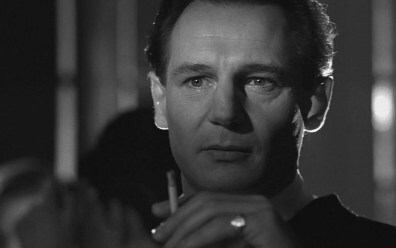
In Schindler’s List, Oskar fights against the genocidal Nazis, and yet he himself is a businessman who starts out caring only about what functionality and profit he can grind out of his workers.
6. Who or What Is Your Character Most Likely to Revere?Finally, flip the last question and examine who your character idolizes. Who does your character most want to be? Although your characters might not have the capacity to immediately fill their heroes’ shoes, they are likely already projecting many of their own strengths and good qualities out of their shadow and onto this person. Alternatively, they may realize the specific status symbols they admire about this person are representative of positive traits they already have access to within themselves—just in a different way.
For example, a character who longs to be beautiful and idealizes the school’s popularity queen may be either devaluing her own unique beauty or may realize the traits she truly values as beautiful are already latent within her.

In Ms. Marvel, Kamela Khan eats, sleeps, and breathes her idol Captain Marvel, until she follows her own growth arc to claim her own unique heritage of heroism and power.
***
Shadow work is important for writers; inevitably, this is the work we do upon our own characters in every story we write. Using the quick trick of “shadow theory” to identify the polarities within your characters and bring out the dramatic potential of these powerful contrasts is an incredible tool for deepening your characterizations.
Stay Tuned: Next week, we talk about “5 Ways to Use Your Character’s Shadows to Power Your Story.”
Wordplayers, tell me your opinions! What shadows are you exploring in your own complex characters? Tell me in the comments!Click the “Play” button to Listen to Audio Version (or subscribe to the Helping Writers Become Authors podcast in Apple Podcast or Amazon Music).
___
Love Helping Writers Become Authors? You can now become a patron. (Huge thanks to those of you who are already part of my Patreon family!)The post How to Create Insanely Complex Characters Using “Shadow Theory” appeared first on Helping Writers Become Authors.
May 15, 2023
Why There’s No Such Thing as “Just a Story”
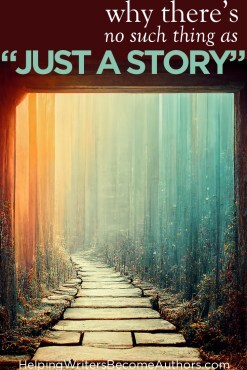 Every so often, I will hear someone say, “It’s just a story.”
Every so often, I will hear someone say, “It’s just a story.”
Most often, I hear this said in situations in which a story is being critiqued. In response to comments that a story failed to reach its potential because it lacked theme or plot structure or strong characterization, a person might insist, “Well, it’s just a story.”
Usually, the sense I get in these situations is that the person enjoyed the story well enough and doesn’t really appreciate hearing how it might have been better. But in other instances, a person might respond to someone else’s elation over a wonderful story experience with the same words: “It’s just a story.” Or maybe, “It’s just entertainment.”
Readers of this site will find it no surprise that I adamantly disagree with this notion.
First of all, I will state my recognition that what is really being said in these instances usually has more to do with personal subtext for the speaker (e.g., maybe they enjoyed this story even if it “could have been better,” don’t appreciate a critique that might diminish their own enjoyment, and don’t want to feel they have to measure their own opinions and experiences against the parameters of “good fiction”—which is all fair enough). However, I feel this statement or any equivalent is not only erroneous, but perhaps one of most the dangerous lies humanity can tell itself.
Why? Because this statement attempts to diminish story to irrelevance. To me, it is saying stories are empty calories. They exist merely for fun and should therefore not be expected to offer any value—or bear any responsibility—beyond that. Although writers may sometimes be guilty of saying this phrase, it is more likely to emerge from an audience member. But to my mind, whatever its source, it is an attempt to shrug away the weighty burden that is inherent to story by dint of the form’s sheer power.
4 Reasons a Story Is Never “Just a Story”Whether as creators of story or merely participants, when we interact with story, we interact with a mighty, even primal, force. Even in its smallest increment (such as a 10-second YouTube commercial), story has the power to change us. Even at its most seemingly fluffy and farcical (such as a popcorn comedy), it is communicating with us. As stated in a Hopi proverb (and also by Plato, but I like this version best):
Those who tell the stories rule the world.
This is not merely a challenge for us to be the ones who tell the stories. It is perhaps even more tellingly a warning for us to recognize that whenever we interact with story, we are facing a catalytic force. We might rephrase the famous Carlos Casteneda quote about knowledge to speak instead of story:
A man goes to [story] as he goes to war: wide-awake, with fear, with respect, and with absolute assurance. Going to [story] or going to war in any other manner is a mistake, and whoever makes it might never live to regret it.
Today, I want to take a quick look at why story is so important and powerful—and, as such, demanding of our utmost respect.
1. Stories Are Life, Life Is a StoryWhat are stories? Nowadays, we tend to think of stories as parts of that highly specialized commercial enterprise known as the entertainment industry. But before there were movies or novels or even poets, there were simply people trying to bring sense to existence. Life is the story. Every one of the entertaining or enlightening little episodes that humankind has ever thought up is only ever a small reflection of the infinite whole.
Therefore, to my mind, when someone says “it’s just a story,” what they are also implicitly saying is, “it’s just life.” Discounting story discounts life.
I don’t say that lightly. And please note I am not saying that disliking certain stories or types of stories or critiquing them is the same as discounting story itself. Indeed, having strong opinions about the commentary stories offer to life—both in their content and their execution—indicates just the opposite. To care that a story is not an authentic mirror of life, that it is does not resonate, or even that it misses the mark here and there, is to simply to reaffirm its power to shape us, as well as our great passion for interacting with that power.
I mused recently on Instagram about why it is that people take stories so personally. As I write this, I now realize that, of course, this is why. We care because a story is never “just a story”: it is an affirmation or rejection of life as we know it. Indeed, the art and practice of bringing consciousness to our own reactions to stories and of learning to judge stories with precision and clarity is itself a powerful life skill and even a tool of self-development.
2. Story Form Is an Accurate (But Evolving) Map of Human ConsciousnessView this post on Instagram
A post shared by KM Weiland (@authorkmweiland)

Writing Archetypal Character Arcs (affiliate link)
You may note that I often speak of “story” (singular), rather than simply “stories” (plural). I use this phrasing deliberately to evoke the entity of not just stories in general but story form—the emergent archetype of arc and structure that we refer to when speak of stories (and which I have explored in depth in all of my books on writing and particularly the brand new one Writing Archetypal Character Arcs: The Hero’s Journey and Beyond).
Writers often tend to go meta on story form and think of it merely as a tool that helps us write consistently competent stories. If only we can learn and memorize the principles of plot structure, character arc, and theme (amongst a plethora of other techniques), then we will have mastered story. But all of these “forms” preexist the writing guides. To paraphrase what Stephen King has said of his own writing process, these writing guides were not invented as arbitrary rules for writers, but rather “discovered,” like dinosaur bones waiting to be excavated.
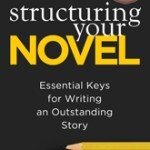

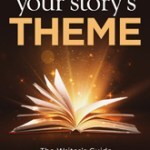
The only reason writing “rules” (aka, patterns of story theory) exist is because they are, in fact, an attempt to understand and map the experience of our human consciousness. Not only does this make story our ultimate testing ground for experimenting with our own understanding of ourselves, it also reveals the specific essence of story’s great power.
Stories “rule the world” precisely because they both reveal and influence how we experience the world and indeed life itself. This is true of every story—from the crudely farcical (if no less finely wrought) commercial to the wobbly B movie to the beat-perfect romance novel to the eye-candy popcorn movie to the Pulitzer-winning literary novel to the avant-garde indie film.
3. Stories Are Humanity’s MirrorMost obviously, stories wield power because they mirror back to us our own experiences and shadows. Story is a magic mirror. Whether we realize it or not, what story shows us has the potential to profoundly affect our perception of ourselves and the world.
This is, arguably, where it becomes most important to reject the idea of “just a story.” What, after all, is story showing you? When a story is not finely wrought—when it is sloppy or inaccurate in its portrayal of the form and therefore of life—it fails as a faithful mirror. To the degree audiences are willing to accept an unfaithful mirror, it creates the potential for imbalance both within individual lives and society as a whole.
Even the subtlest story, or the subtlest scene, is sharing something with its audience. I think of the scenes of silence in Hayao Miyazaki’s films, in which characters simply gaze—for what may seem like long minutes to our modern minds—as the clouds pass by. One moment, no dialogue—and yet it is still powerful.

The Studio Ghibli adaptation of Howl’s Moving Castle.
4. Stories Are SubliminalAlthough this list could go on indefinitely, I will close with one final point about why stories are so powerful—and that is their ability to communicate directly to the subconscious. As such, they are subliminal, whether authors intend them to be or not.
Because most of what is communicated to us in a story happens at this subliminal level, this is where the vast majority of a story’s power sits. Stories affect not just conscious thought and emotion, but mood and energy. Humanity’s hardwired understanding of story form (plot structure, character arc, etc.) is so innate that we interact with it even when neither the author nor the reader/viewer possess any conscious understanding of the “rules.”
Of course, this power is recognized by many writers. The subliminal power of story is purposefully used by storytellers of all stripes—including advertisers and propagandists. In fact, the recognition of this subliminal power often inspires authors to try their hand at wielding it themselves. We can right all wrongs if only we can powerfully communicate to audiences our perspective! But I’m not suggesting this as a pounding pulpit for one’s own view of morality—because, again, the power here is subliminal, arising most powerfully not from the messages spoken in a story but from the form itself. (Indeed, what authors sometimes think they are saying in a story might be completely undermined or altered by the story’s own subtext—and the subtextual message is always the more powerful.)
What About Stories as Entertainment or Escape?So what about stories as entertainment or escape? If people whose insist “a story is just a story” are wanting to avoid the heavier ramifications of interacting with or creating stories, does that mean any interaction with or understanding of story must be heavy?
Of course not. Indeed, one of the most powerful aspects of story is its ability to entertain. That, in itself, is proof of story’s subliminal power to affect emotion, mood, and energy. The subtlety and the subtext of the form are lost when the conscious brain is not distracted by something that piques its interest and entertains it.
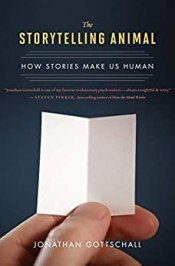
The Storytelling Animal by Jonathan Gottschall
More than that, the reason we are entertained by these often exaggerated facsimiles of life is for the very reason that the human brain is entranced by life. Many studies, such as those mentioned by Jonathan Gottschall in his book The Storytelling Animal, have shown how stories help us learn and grow and, indeed, survive. Although escape from the present can often be part of the heady cocktail that is story immersion, stories are, in fact, all about helping us better equip ourselves for our survival of reality.
***
All of this is to say: no one will ever ever convince me there is such a thing as “just a story.” I have witnessed its power. I have lived it. I have breathed it. I have been utterly transformed by it time and time again as both author and audience member. It is a sacred force. And like all that it is sacred, it is no “tame lion.” Particularly as writers and creators ourselves, we best wield that power for our own good and the good of others when we go to it with our eyes wide open and our hearts ready to grapple with its truths.
Wordplayers, tell me your opinions! What do you think is the most powerful thing about story? Tell me in the comments!Click the “Play” button to Listen to Audio Version (or subscribe to the Helping Writers Become Authors podcast in Apple Podcast or Amazon Music).
___
Love Helping Writers Become Authors? You can now become a patron. (Huge thanks to those of you who are already part of my Patreon family!)The post Why There’s No Such Thing as “Just a Story” appeared first on Helping Writers Become Authors.
May 8, 2023
Tips on Hiring and Working with a Book Cover Designer (And New Cover Reveal for Dreamlander!)
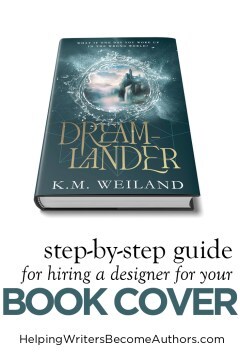 As writers, we know an eye-catching book cover is vital for captivating potential readers. Recently, I got to work with the talented team at Ebook Launch to update the cover of my portal fantasy Dreamlander. Today, I’m excited to share my experience and insights to help you find and collaborate with the right book cover designer.
As writers, we know an eye-catching book cover is vital for captivating potential readers. Recently, I got to work with the talented team at Ebook Launch to update the cover of my portal fantasy Dreamlander. Today, I’m excited to share my experience and insights to help you find and collaborate with the right book cover designer.
First, a little background on this project. As many of you know, Dreamlander was published in December 2012 and has been easily the most popular of all my novels. So it seemed appropriate that for its 10-year anniversary, the book should get a little refresh! I’m incredibly happy with the results, and I hope you’ll love it too! To celebrate, I’m doing a paperback giveaway over on Instagram, so be sure to check that out as well.
Today, using my recent collaboration with Ebook Launch on Dreamlander as a case study, I’m going to walk you through the step-by-step process of hiring and working with a book cover designer. We’ll explore the process of finding the right designer, budgeting and pricing, preparing for the design process, and achieving an effective collaboration.
(Please note that the links throughout this post are affiliate links. I only participate in affiliations with products or services I personally use and love.)
Finding the Right Book Cover DesignerFinding the perfect book cover designer may seem daunting, which is why thorough research is essential to ensuring a successful match. Consider these key factors as you explore your options:
1. Review the Designer’s PortfolioReviewing a designer’s portfolio will give you insight into their range and versatility, as well as their style preferences. When I was searching for a designer for Dreamlander, Ebook Launch’s book cover portfolio immediately stood out, showcasing a variety of styles and genres that aligned with my vision.
You’ll want to find a designer whose style preferences match your own, ensuring a smoother collaboration and a cover design that reflects your story. Make sure the designer you choose offers examples of work in your genre and preferred style in their portfolio, and ask yourself whether their style complements your book’s genre and tone. If the answer is yes, you’re on the right track.
2. Examine Testimonials and ReviewsCheck the designer’s testimonials and reviews from other authors. These provide valuable insights into the designer’s work ethic, communication style, and ability to deliver on time and within budget. Look for credible sources of reviews and affiliations with industry associations (e.g. like the Alliance of Independent Authors).
3. Evaluate Availability and ResponsivenessIt’s vital to collaborate with a designer who is available to accommodate your book’s timeline and will promptly respond to your inquiries, revision requests, and other concerns. Before beginning the design process, confirm that your chosen designer can deliver both the cover design and any additional marketing materials in time for your book’s launch. When working on the cover for Dreamlander, the team at Ebook Launch communicated with me solely via email which may not work for everyone; however, they offered timely updates and always addressed my questions and concerns, which made the entire process smooth and enjoyable.
4. Consider PricingWhen searching for the right book cover designer, one of the top factors is finding one that fits your allocated budget while still providing value. Amounts can vary significantly, so carefully compare costs and the value each designer offers, keeping in mind that pricing doesn’t always correlate with quality. Reedsy has quoted under $750 USD on average as the cost from the designers on their website. Look for clear pricing on the designer’s website to avoid misunderstandings down the line. Don’t forget to budget for additional marketing materials (such as social media graphics or promotional banners) or paperback or audio book versions.
Working With Your Book Cover DesignerOnce you’ve found the right designer, you will typically need to navigate a couple of stages of the book cover design process. These include submitting a detailed design brief, receiving and reviewing initial concepts, collaborating on revisions, and approving the final design. In this section, I’ll delve into each stage in more detail, using my personal experience working on the redesigned cover for Dreamlander. I’ve also provided a couple of tips for a successful collaboration at the end.
1. Submit a Detailed Design BriefThe first step in the book cover design process is providing a clear and detailed design brief, which will ensure your designer understands your vision and can create a cover that captures the essence of your book. Most of the book designers I’ve worked with ask you to fill out detailed forms, guiding you to share the information they’ll need from you. Below is some of what I submitted to Ebook Launch for them to work with:
Book Title: Dreamlander
Book Subtitle (optional): What if one day you woke up in the wrong world?
Author Name: K.M. Weiland
Genre: Portal Fantasy
Description of your book:
What if it were possible to live two very different lives in two separate worlds? What if the dreams we awaken from are the fading memories of that second life? What if one day we woke up in the wrong world?
Every night, a woman on a black warhorse gallops through the mist in Chris Redston’s dreams. Every night, she begs him not to come to her. Every night, she aims her rifle at his head and fires. The last thing Chris expects—or wants—is for this nightmare to be real. But when he wakes up in the world of his dreams, he has to choose between the likelihood that he’s gone insane or the possibility that he’s just been let in on the secret of the ages.
Only one person in a generation may cross the worlds. These chosen few are the Gifted, called from Earth into Lael to shape the epochs of history—and Chris is one of them. But before he figures that out, he accidentally endangers both worlds by resurrecting a vengeful prince intent on claiming the powers of the Gifted for himself. Together with a suspicious princess and a guilt-ridden Cherazii warrior, Chris must hurl himself into a battle to save a country from war, two worlds from annihilation, and himself from a dream come way too true.
Describe the key elements you want on your cover:
This is to be a redo for the cover of an already published book. You can see the original cover here: https://www.amazon.com/Dreamlander-K-M-Weiland-ebook/dp/B00A9WU99Q [Note to readers: this link no longer shows the old cover, just in case you were wondering.]
I’m wanting to update the cover into more a current style. Particularly, I’m interested in styles that evoke mood more than character. Rather than featuring a person on the cover, I would rather something more stylistic and artistic.
The book is a portal fantasy, in which the main character is someone from our world who enters a parallel medieval land that is the “world of dreams.” It’s epic fantasy, with lots of battles and swordplay, but also romance. The cover examples below show more of the style I’m wanting this time around.
I do really like the teal green color palette the existing cover has. I wouldn’t mind keeping it, but don’t want to limit creative options either.
Please provide links or examples of other covers you like:
These are more or less ranked in the order I like them:
Love the colors and overall aesthetic here: https://smile.amazon.com/Daughter-Drowned-Empire-Frankie-Mallis-ebook/dp/B09KKR1NJB
The ethnicity of this cover would be inappropriate for my book, which has more of a Renaissance European aesthetic, but I love the colors, the font, and the pop of the central image: https://www.amazon.com/This-Woven-Kingdom-Tahereh-Mafi-ebook/dp/B093ZYDMML
The font work on this one is gorgeous, and I love the symbolism of the central image and how it interplays with the actual letters of the title: https://www.amazon.com/gp/product/B00VAPN22M
This is probably a bit too simple for me, but it does show the basics of what I’m hoping for, which is emphasis on title and color with a strong background visual: https://smile.amazon.com/Court-Mist-Fury-Thorns-Roses-ebook/dp/B015FELXQ0
Love the color, emphasis on title, and the images that are background but still strong and evocative: https://www.amazon.com/Lair-Bones-Curse-Cyren-Queen-ebook/dp/B0985XF333
This one is unique and immediately catches my eye when browsing due to color and contrast: https://www.amazon.com/Starless-Crown-Moon-Fall-Book-ebook/dp/B092T873GC
Again, this one is perhaps a bit simplistic, but highlights the general style I want, with emphasis on color, central image, and strong title treatment: https://www.amazon.com/Witch-Collector-Walker-Book-ebook/dp/B09H6894GR
Same as above: https://www.amazon.com/Ruin-Roses-Deliciously-Dark-Fairytales-ebook/dp/B09CN4DNCP
Of all the “too simple” examples, I actually like this one the best: https://www.amazon.com/gp/product/B09GXL26SV/
2. Review Initial Concepts and Collaborate on RevisionsAfter you’ve submitted your design brief, the book cover designer will present you with initial concepts. In this instance, Ebook Launch reached out before designing the concepts to clarify the direction they wanted to try:
“I love the idea of featuring a galloping black horse and a framing mechanism of dreamy/wavy circles—like a ripple effect on water. The circles/ripples represent the time portal. The black horse would be visually striking, invokes action and works in both contemporary and medieval settings. Other imagery could come into play (a sword, a castle) but they would be more like background etchings. What are your thoughts on featuring a black horse?”
I agreed and, in combination with the original information that I submitted, they started the designs. Here were the original concepts presented to me for Dreamlander:


I decided the second concept was more in line with my vision. However, some elements didn’t quite come together as I had hoped. For instance, I thought the horse/sword graphic appeared too simplistic or even “cartoony” when viewed at a larger size, and somewhat fairy-tale-like in thumbnail size. I also felt that the water motif/portal seemed too separate from the background.
To address these concerns, I suggested exploring alternative central elements, such as a castle, and adding more intricacy to the design. I also requested changes to the title treatment and font for my name to maintain visual consistency across my books.
Remember, it’s crucial to provide clear and constructive feedback to your designer at this stage, so they can fine-tune the design and ensure it meets your expectations.
After some more discussions, I received several revised options:
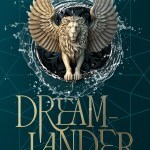

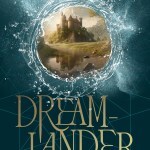
3. Approve the Final Design
Finally, after collaborating on revisions, you will reach the point at which you are satisfied with the cover design. The final version of Dreamlander‘s gorgeous new cover looks like this:
At this point, make sure to review the final design thoroughly, ensuring it meets your expectations and represents your book effectively. Once you’ve approved the final design, your designer will provide you with the necessary files for publishing your book, as well as adapt it to other files you may be needing. In this case, Ebook Launch also prepared print and audio versions for Dreamlander. (Click on the images below if you’d like to purchase either version.)
Final Tips for Successful Collaboration With Your Book Cover DesignerNavigating the book cover design process requires, first and foremost, a harmonious partnership between you and your designer. To ensure a successful collaboration, keep these essential tips in mind:
1. Maintain Open Communication. Create a supportive environment where both parties feel comfortable discussing their ideas and concerns.
2. Provide Constructive Feedback. Offer specific, actionable suggestions that will help your designer refine their work, while also acknowledging their strengths and accomplishments. (Remember the compliment sandwich!)
3. Stay Flexible and Open to the Designer’s Expertise. Remember they bring valuable experience and knowledge to the table. Be receptive to their insights and recommendations. By fostering a collaborative spirit, you’ll work together more effectively to bring your creative vision to life.
Finding and collaborating with the right book cover designer is a vital step in your book’s success. By researching designers, reviewing portfolios, considering pricing, and maintaining open communication, you can foster a fruitful partnership and create an eye-catching cover that captivates readers. Remember to be patient, diligent, and receptive to the designer’s expertise throughout the process.
I hope my experience working on Dreamlander provides insights for your own book cover design journey. If you’re ready to create a captivating cover for your book, consider reaching out to Ebook Launch and exploring their services. Best of luck in your creative endeavors, and may your book cover design journey be a rewarding one! (And don’t forget to enter the paperback drawing on Instagram!)
Wordplayers, tell me your opinions! Have you ever worked with a book cover designer? Tell me about your experiences!Click the “Play” button to Listen to Audio Version (or subscribe to the Helping Writers Become Authors podcast in Apple Podcast or Amazon Music).
___
Love Helping Writers Become Authors? You can now become a patron. (Huge thanks to those of you who are already part of my Patreon family!)The post Tips on Hiring and Working with a Book Cover Designer (And New Cover Reveal for Dreamlander!) appeared first on Helping Writers Become Authors.
May 1, 2023
The Backstory Drip (Backstory Techniques, Pt. 3 of 3)
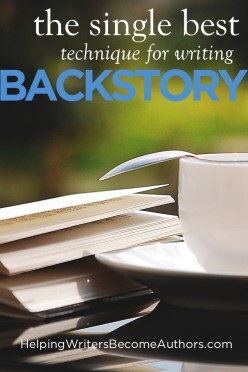 What are the best backstory techniques you can use in your story?
What are the best backstory techniques you can use in your story?
Over the past two weeks, we’ve been discussing some of the options writers have for sharing backstory in their stories. So far, we’ve talked about four specialized techniques, analyzing their respective advantages, disadvantages and best-use practices:
FlashbacksProloguesBackstory-as-StoryAlternating TimelinesAll four techniques are important and useful, but most are only appropriate in specific situations when the author desires to achieve a certain effect. What we haven’t yet talked about is the single best backstory technique—the one used in every type of story, the one that is always a good choice, the one that offers the fewest possible disadvantages, and the one that is most effective in communicating important information to readers without interrupting the momentum of the main plot.
This technique is the “backstory drip”—and is actually several different techniques that come together to reveal backstory so subtly and effectively readers may not even think to distinguish it from the main story. Of course, the caveat is that it works this way when it’s done well. Today, we’re going to talk about how to do it well.
Once again, the backstory on this post about backstory is that I was inspired to write it after watching Amazon’s limited series The English, a western of vengeance, played out in a hellscape of the American Great Plains by an English lady intent on killing the father of her dead son and a Pawnee warrior determined to claim land he is owed in Nebraska for his service in the U.S. Cavalry. Although I liked lots of things about the show, I felt the main technique it chose to impart its backstory—an episode-long flashback inserted three-quarters of the way into the story—was a misstep. I specifically analyzed this choice in the first post about flashbacks.
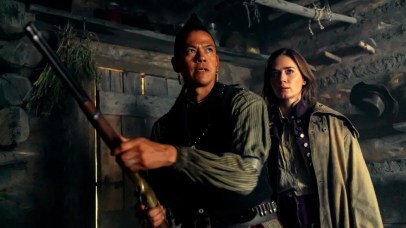
The English (starring Emily Blunt and Chaske Spencer) can teach writers about backstory techniques—the good, the bad, and the ugly.
Today, as we discuss the incredibly versatile and effective technique of the backstory drip, we’ll take a quick look at how this show did utilize this technique and how it could have utilized it more (and in place of the flashback) to better effect. Please note: there will be SPOILERS for The English in this post.
The Only Backstory Rule That MattersI like to say there is only one backstory rule that matters, that being: Never share backstory with your audience until absolutely necessary.
As with any “never/always” rule, this is necessarily hyperbolic. The essential truth is that backstory must matter to the story. It could matter for any number of reasons, including because it:
Provides information that prevents reader confusionOffers context for character motivationDirectly turns the main plotIf the inclusion of backstory doesn’t do one of these three things, then the author must question whether its inclusion is the best choice.
This rule becomes even more important if you’re using one of the specialized techniques we talked about in previous posts, since all four of these techniques call extra attention to themselves by standing outside the main plot. However, within the skillful use of the backstory drip, you can actually get away with a lot more.
The backstory drip refers to the practice of slowly “dripping” backstory throughout the story. The backstory isn’t dumped obviously in any one place (although it can be used in cooperation with other techniques, such as the flashback). Rather, the backstory drip distributes information throughout the entire story, when and as it is needed, usually without ever leaving the POV characters’ present-time perspective.
Think of Backstory as Foreshadowing and PayoffUltimately, the backstory drip is really a foreshadowing technique. What you’re dripping in throughout the story are clues (or plants), leading up to reveals (or payoffs).
Now, not all necessary backstory in a story will be worthy of a reveal. A reveal, after all, is a big moment in a story. It is the revelation of information that turns the plot. As such, writers are often tempted to turn immediately to the technique of the flashback, which allows them to fully dramatize these important moments from the characters’ pasts. While this may occasionally be the best approach, a skillful use of foreshadowing and revelation can often create an even stronger and more seamless effect.
Don’t undervalue seamlessness within a story. Fireworks are great, but don’t put them into a story just for the sake of fireworks. Rather, look for ways in which to use the backstory drip throughout the story to make sure readers understand how this information from the characters’ pasts is crucial to their present.
Sound backstory drip techniques include the following:
1. Only Tease Backstory That Turns the PlotJust as not all backstory info deserves to be teased at all, not all backstory reveals deserve to be teased over and over again. Always weigh the impact of any particular reveal in your story. The more impactful a reveal, the more you can tease it. But if the revelation of the info doesn’t change much in the plot, then over-teasing it will cause readers to expect more bang for their buck than you’re able to deliver.
For example, sometimes you may just need to let readers know information upfront (for example, maybe two of your characters are friends who grew up as next-door neighbors), so readers can return to the magnetic pull of the story’s main throughline. On the other hand, in a different story, this same bit of information might be important enough to turn the plot (in which case you would drip clues, hints, and insinuations about your two characters’ relationship, leading up to a moment in which the revelation that they grew up together proves itself important enough to change something in the plot’s trajectory).
2. Make At Least One Character Need to Know the Backstory of The Other Character(s)Readers shouldn’t be the only ones who want and need to know the backstory. One of the single best ways to make sure backstory reveals matter to your story is to make sure they matter to at least one character. This is also a reminder not to make characters spill their life histories to each other too early in the story. Utilize secrets. These secrets don’t have to be huge in themselves; they can be small, intimate, and mundane—as long as they are important to one or both characters.
Sometimes a character’s desire to discover the backstory will be a throughline of its own, as one or more characters track down information to solve a mystery. Often, backstory secrets grow in importance to characters as their relationships deepen. When they first meet, they may not care about or want to know about the motivating catalyst in the other’s past. But as they go deeper down the rabbit hole with each other, these little mysteries suddenly become important.
Remember: the more important a backstory reveal is to a character, the more important it will be to readers.
3. Backstory Secrets and Mysteries Should Come With a High Price for At Least One CharacterCharacters must have a reason for not telling each other the whole truth about themselves. Information is only capable of turning the plot if it changes things. Backstory reveals should alter the status quo in some way, either within the relationship or on a larger scale within the action of the plot.
Load your backstory reveals with stakes. Either the character delivering the information or the character discovering it should pay a price for this reveal, even if it is just a temporary threat to their mutual trust. Think of a reveal as a “crisis of commitment” within the relationship. Once the information is out there, choices will have to be made.
4. Don’t Share Backstory Until It Is Crucial for Either Turning the Plot or Preventing Reader ConfusionHere’s our “one rule” again. Not only does this rule help you weed out backstory information that really isn’t important to the story, it also helps you draw out the suspense of your foreshadowing. The higher the stakes, the bigger the impact on the plot—and the bigger the impact on the plot, the more foreshadowing you can apply earlier in the story. Either way, try to gauge the absolute latest moment in the story you can reveal the full backstory and still have the greatest impact on the plot.
3 Ways to Reveal BackstoryTaken as a whole, the backstory drip is not a simplistic and obvious technique, as are flashbacks and prologues (which is, perhaps, why new writers sometimes find the latter easier to wield). However, there are specific techniques you can use to disperse backstory slowly and masterfully throughout your story.
Here are three:
1. Reveal Backstory Via DialogueFor my money, this is the single best technique for distributing backstory. Why? Because dialogue is the technique that comes the closest to true, real-time “showing” within written fiction. You can subtly drip clues throughout the story, leading up to a reveal, by having characters themselves drop clues to each other in their dialogue. The hints they drop about the things they don’t want to talk about can sometimes hint at more than any outright information.
Dialogue happens between characters, which means it impacts not just the plot but the relationships. When you are crafting your backstory reveals to impact other characters, dialogue becomes your single most powerful technique for unleashing that backstory.
When dialogue reveals are well-handled, inner and outer conflict will both be present—context and subtext in the dialogue—as characters wrangle with themselves and each other about what to share and what not to. However, writers must be careful with this technique. Info-dumping in dialogue is still info-dumping. Take into consideration all the many techniques of good dialogue that attempt to recreate the subtle give-and-take of real-life conversations.
For Example: The English is a backstory-centric story that utilizes the drip effectively for planting its clues and revealing its eventual payoffs (with the exception of that one interruptive flashback). It does this particularly well via dialogue, thanks to the slowly evolving relationship between the two mismatched leads. Most of the unrevealed backstory belongs to British lady Cornelia Locke. Her traveling companion Eli Whip starts out adamantly not wanting to know anything about her, but as their journey deepens, she drops small clues about her past, her motivations, her dead son, and her relationship with her son’s father. Eventually, the context alone allows Eli to figure out much of what happened to Cornelia, and she reveals to him other details in dialogue. The visceral nature of one character being impacted by information about another character is inherently more powerful than information that is revealed, at a remove, in a flashback. The entire flashback episode could have been deleted and its information—about Cornelia’s rape, her infection with syphilis, and her son’s death from the same—conveyed by Cornelia to Eli in far less time and far more powerfully.

Dialogue is one of the single best backstory techniques for both clues and reveals, since it not only shares information but creates consequences within character relationships.
2. Reveal Backstory Via External Discovery/Visual DramatizationAn equally powerful technique is that of “visually” showing readers the revelation. In a visual medium, such as film, the reveal can be shown literally; in written fiction, it will be dramatized through description and an interspersion of the other techniques.
With this technique, readers do not learn about the backstory through a character’s dialogue, but through a physical or visual discovery of some sort. For example, perhaps characters discover an old photograph in an attic or stumble upon the scene of a crime. This can be used both for the drip of clues early on and for the reveal later in the story.
By the time you get to the reveal, whatever the character sees or experiences should be evocative enough that readers immediately understand the significance with little to no explanation necessary from the writer (which is not to say characters may not add explanation later as they react with one another).
For Example: The English employs several viscerally potent visual clues about the effects of the history upon the present. Several characters’ gruesome disfigurements from syphilis are potent enough to communicate Cornelia’s backstory in a way that directly impacts the present narrative and the characters who are trying to navigate it. Similarly, photographs from Eli’s past, in which he recognizes Cavalry officers response for a massacre, communicate their import to the audience just as quickly as to Eli himself.

Visual clues, including an important photograph, are among the visual backstory techniques used in The English.
3. Reveal Backstory Via Internal NarrativeFinally, you can also sow clues and offer reveals from within a character’s internal narrative. This approach is less evocative than dialogue and does come with more caveats. Particularly, it’s tough to reveal something about a character’s own backstory from within his internal narrative; after all, he knew all along.
You’ll achieve the most powerful effect every time when you align your readers’ discovery and response to a reveal with a character’s. Thus, if you’re revealing something about your POV character, it’s best to utilize dialogue, since the POV character (and the readers) can at least observe the other character’s reaction.
However, if a character is discovering information new to her, she may be all by herself when she figures it out, in which case allowing readers to experience this revelation inside the character’s mind can be powerful.
For Example: The English doesn’t allow for internal narrative in the same way that a novel might, but it does tease backstory through Cornelia’s opening voiceover, which we are meant to understand as her thoughts, in which she reflects back on the events of the main story and earlier.

Although backstory should be interacted with sparingly within internal narrative (or voice-overs, as in the case of The English), this third approach is an important backstory technique to have in your toolbag.
***
Backstory is an important part of any story. The context it provides elevates a story from a simple narrative throughline to an episode that exists as part of a larger whole—both within an individual character’s life and within the greater human drama. As such, backstory is a crucial technique to get right. Mastering the five techniques we’ve discussed throughout this series—flashbacks, prologues, backstory-as-story, alternating timelines, and especially the backstory drip—will allow you to choose which will most elevate your story at different intervals throughout the narrative.
Wordplayers, tell me your opinions! Which do you think are the most effective backstory techniques? Tell me in the comments!Click the “Play” button to Listen to Audio Version (or subscribe to the Helping Writers Become Authors podcast in Apple Podcast or Amazon Music).
___
Love Helping Writers Become Authors? You can now become a patron. (Huge thanks to those of you who are already part of my Patreon family!)The post The Backstory Drip (Backstory Techniques, Pt. 3 of 3) appeared first on Helping Writers Become Authors.




